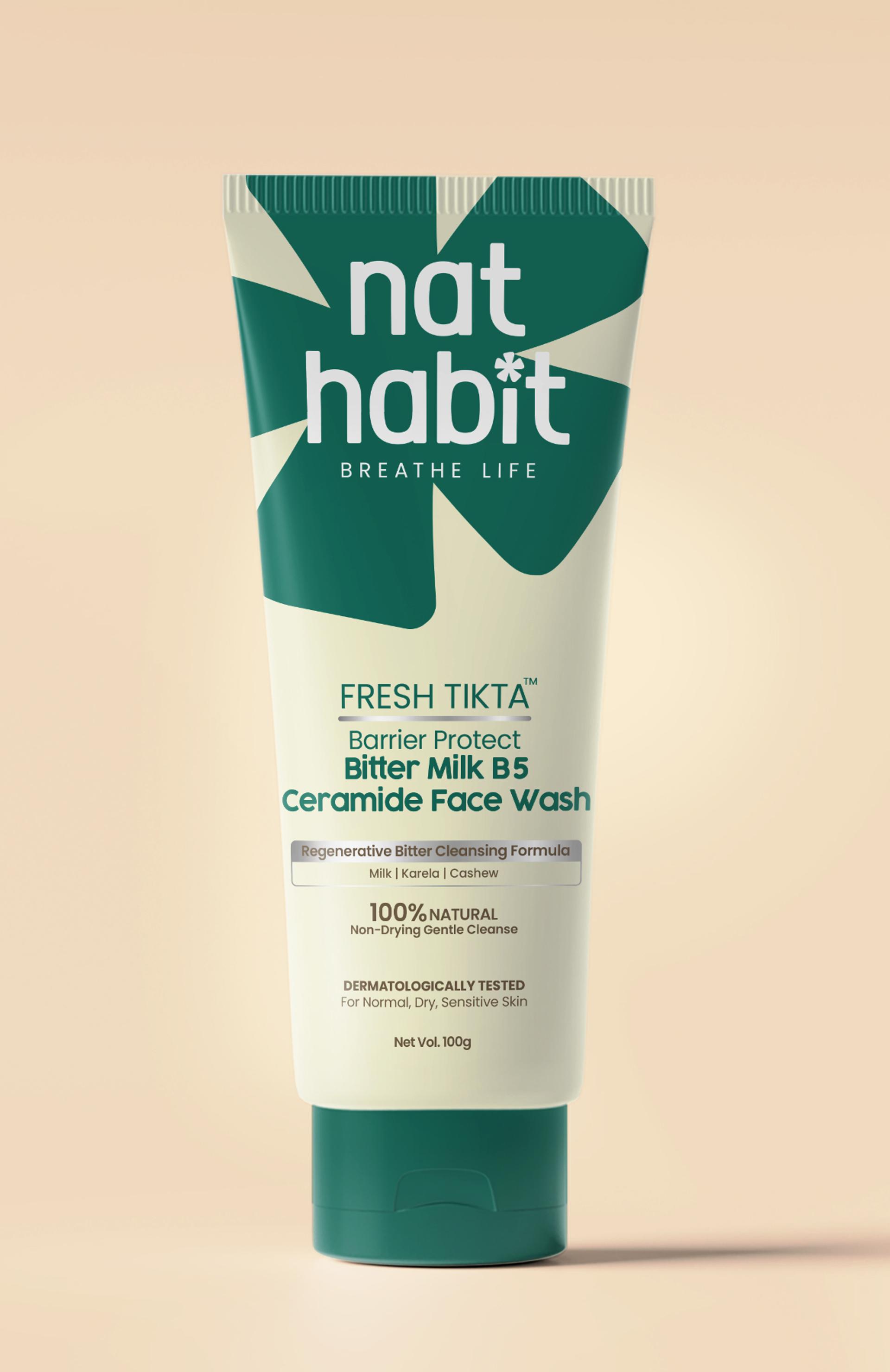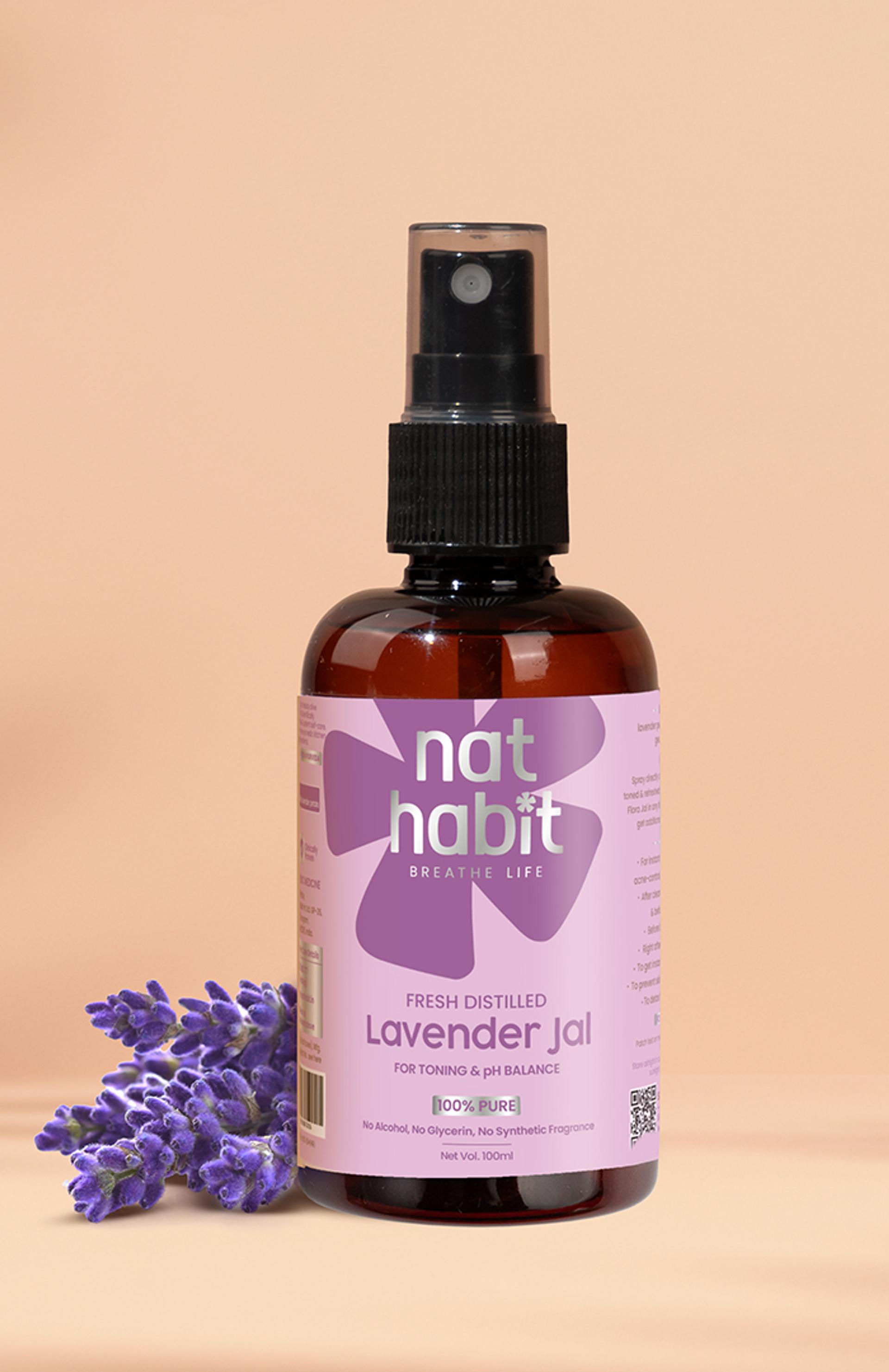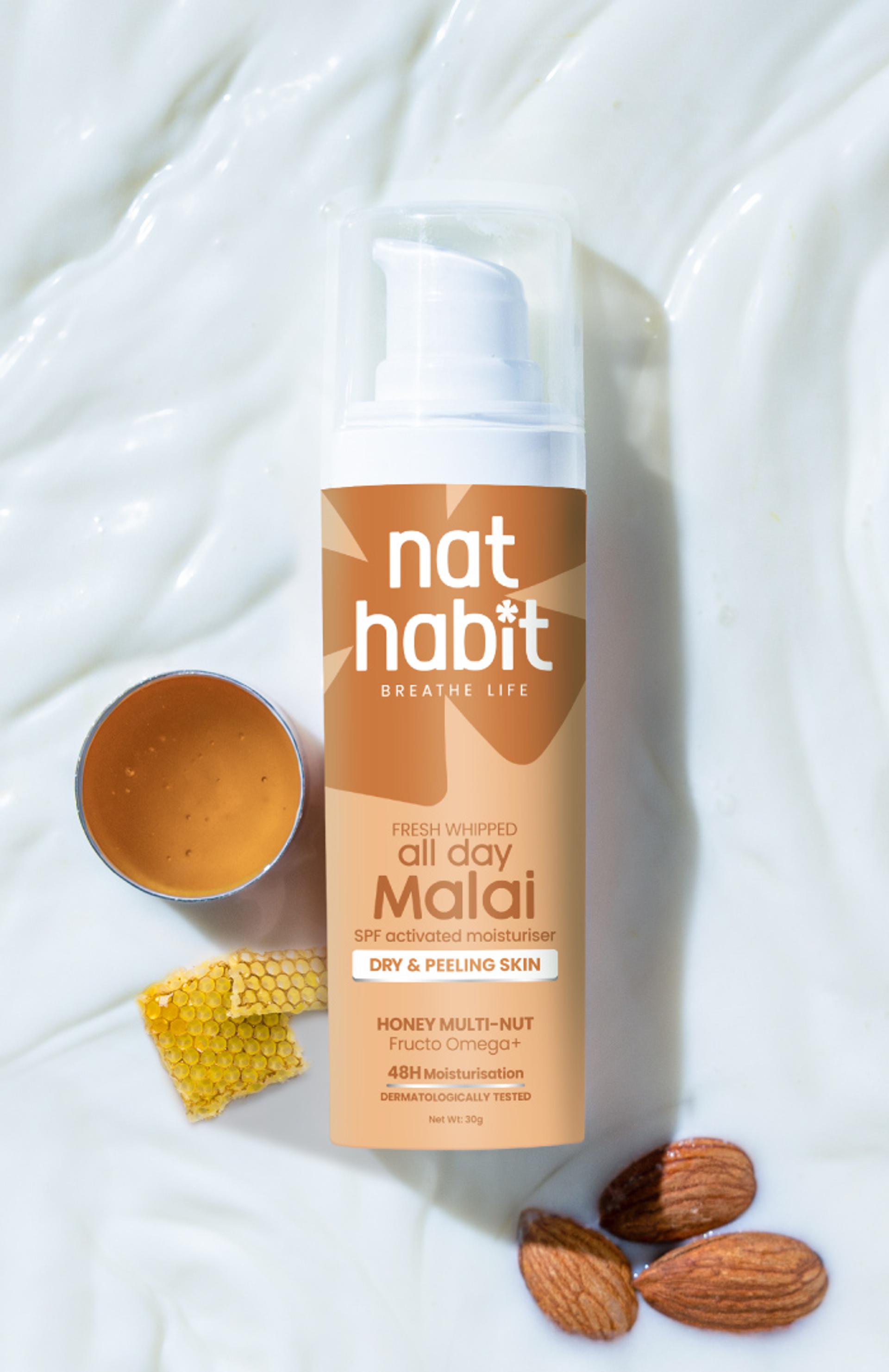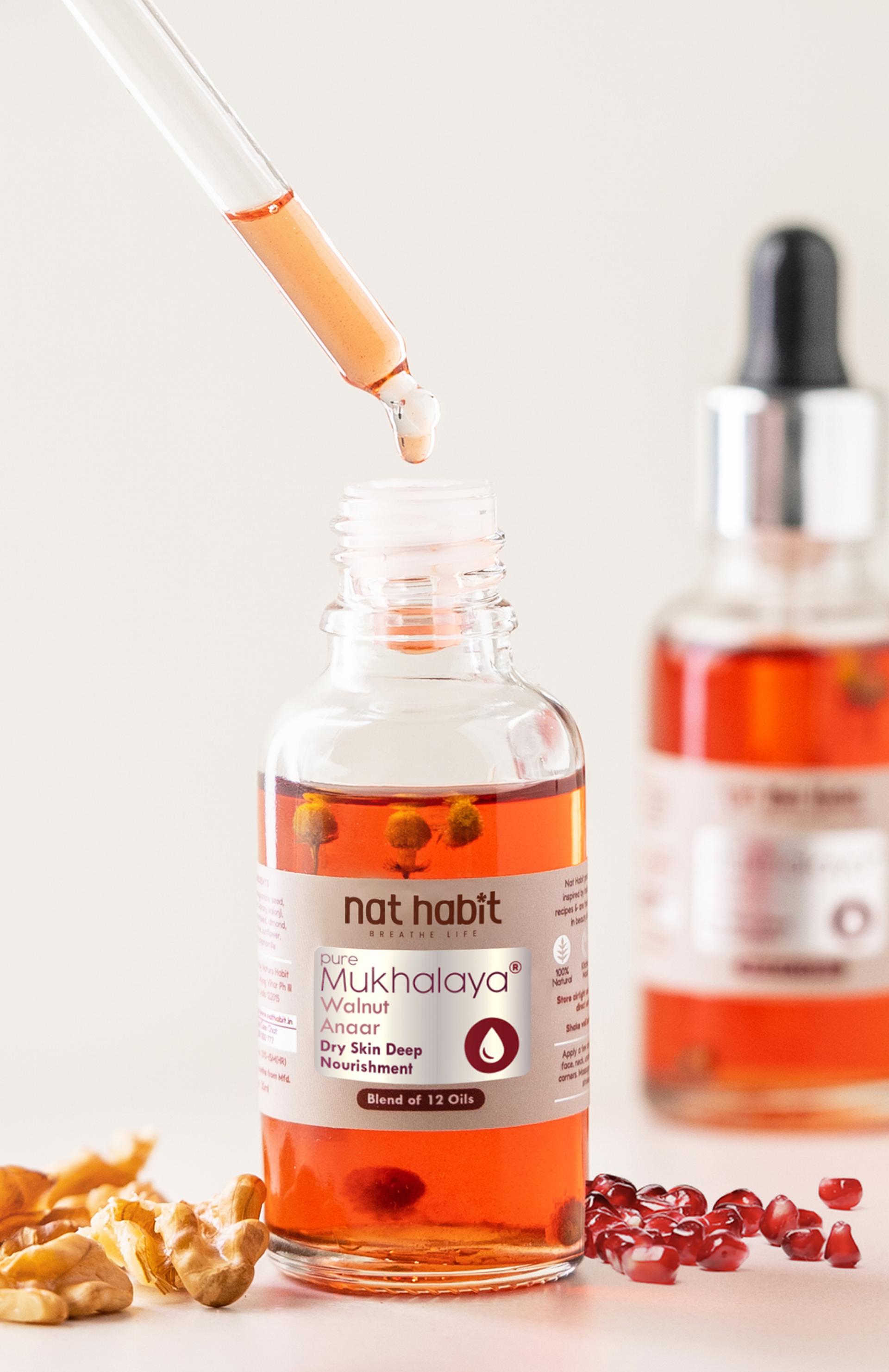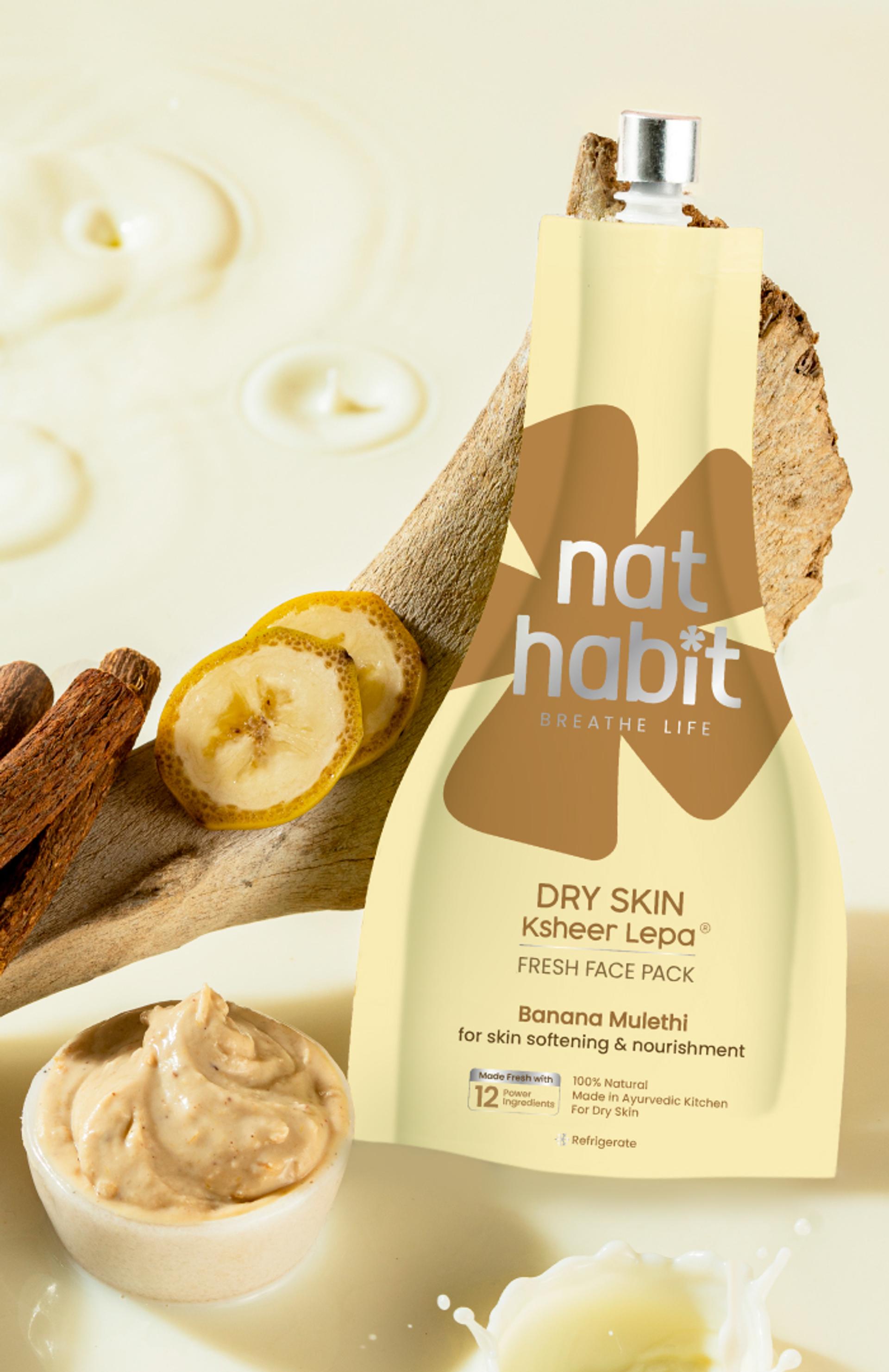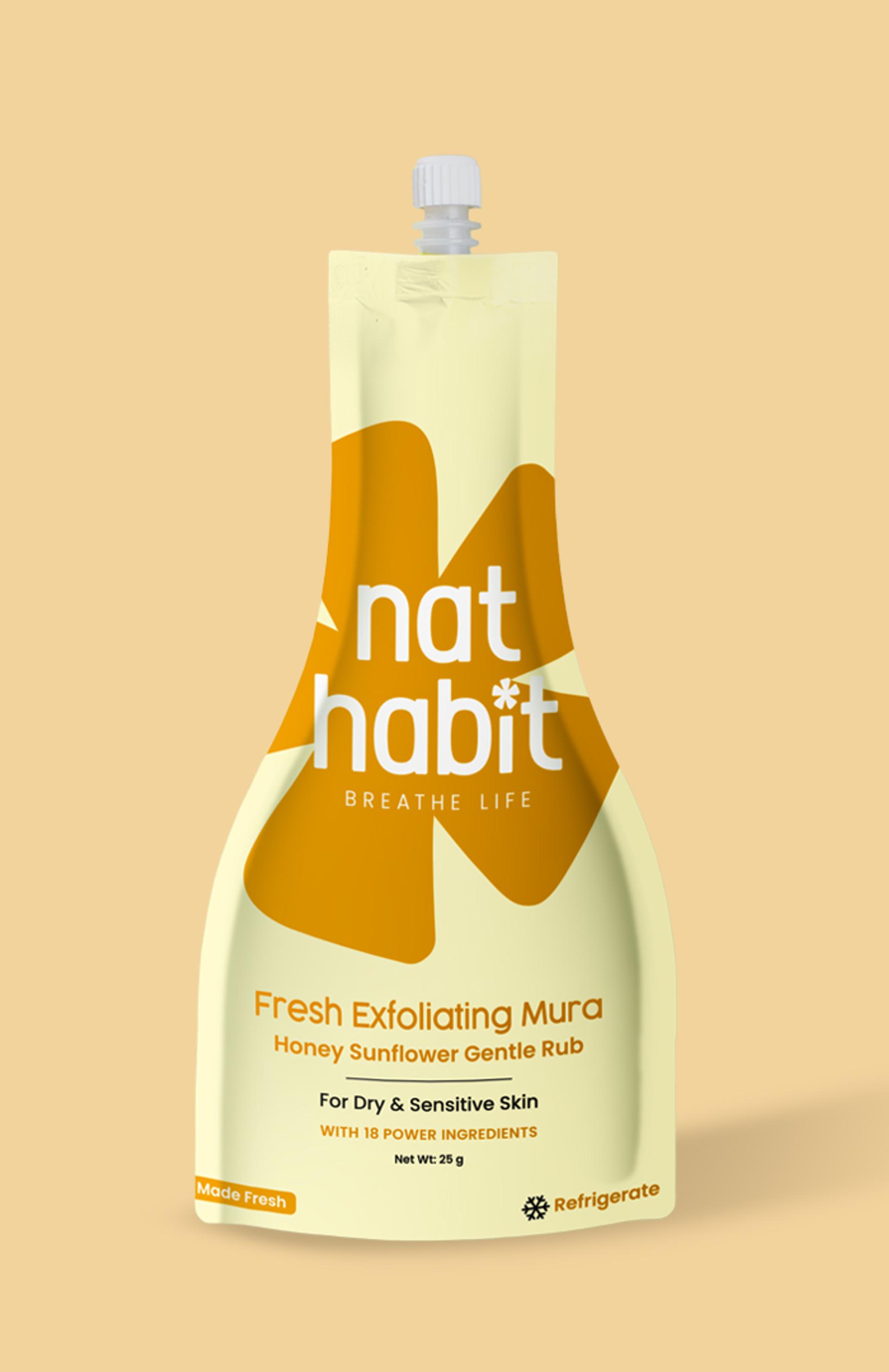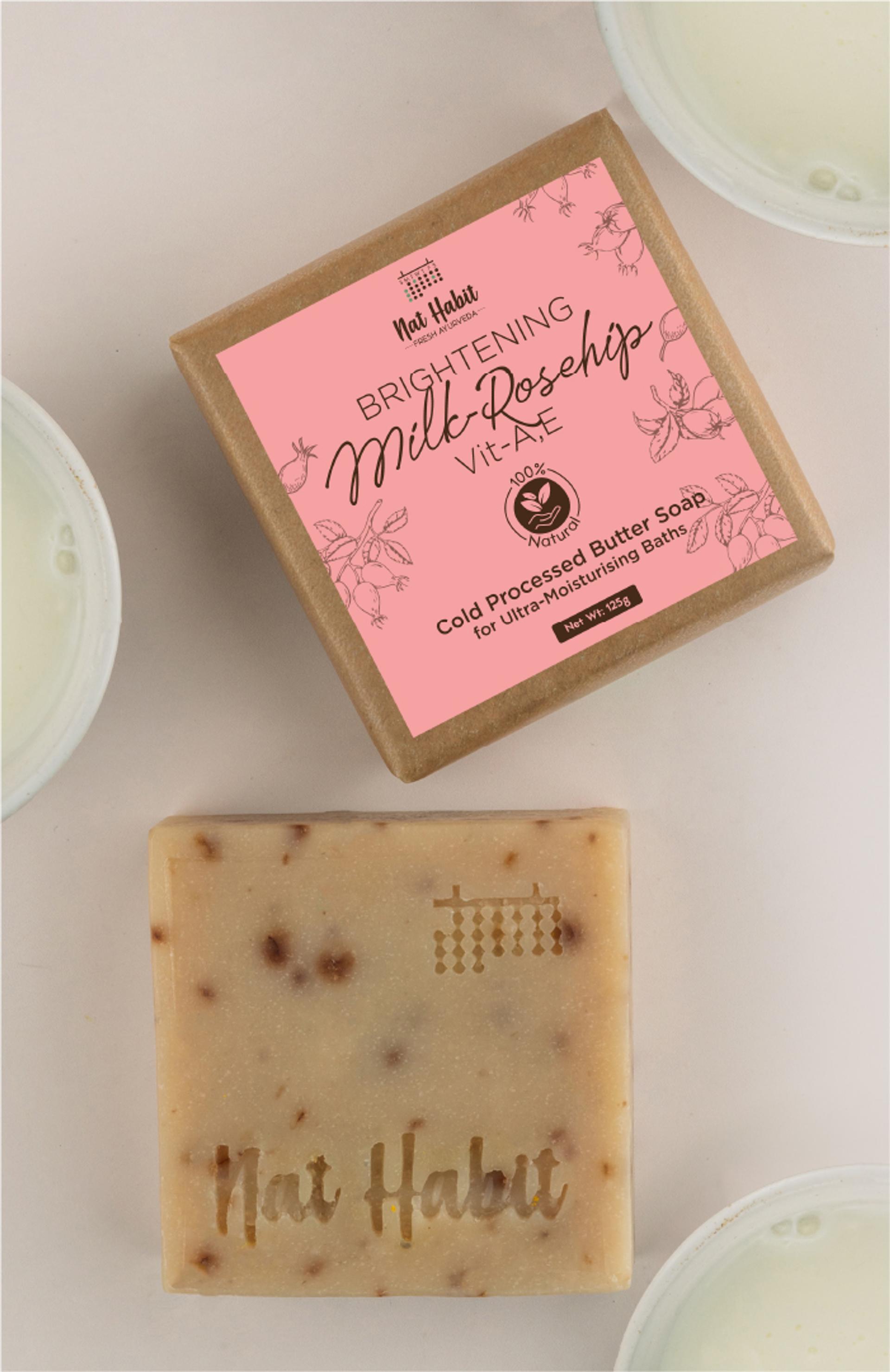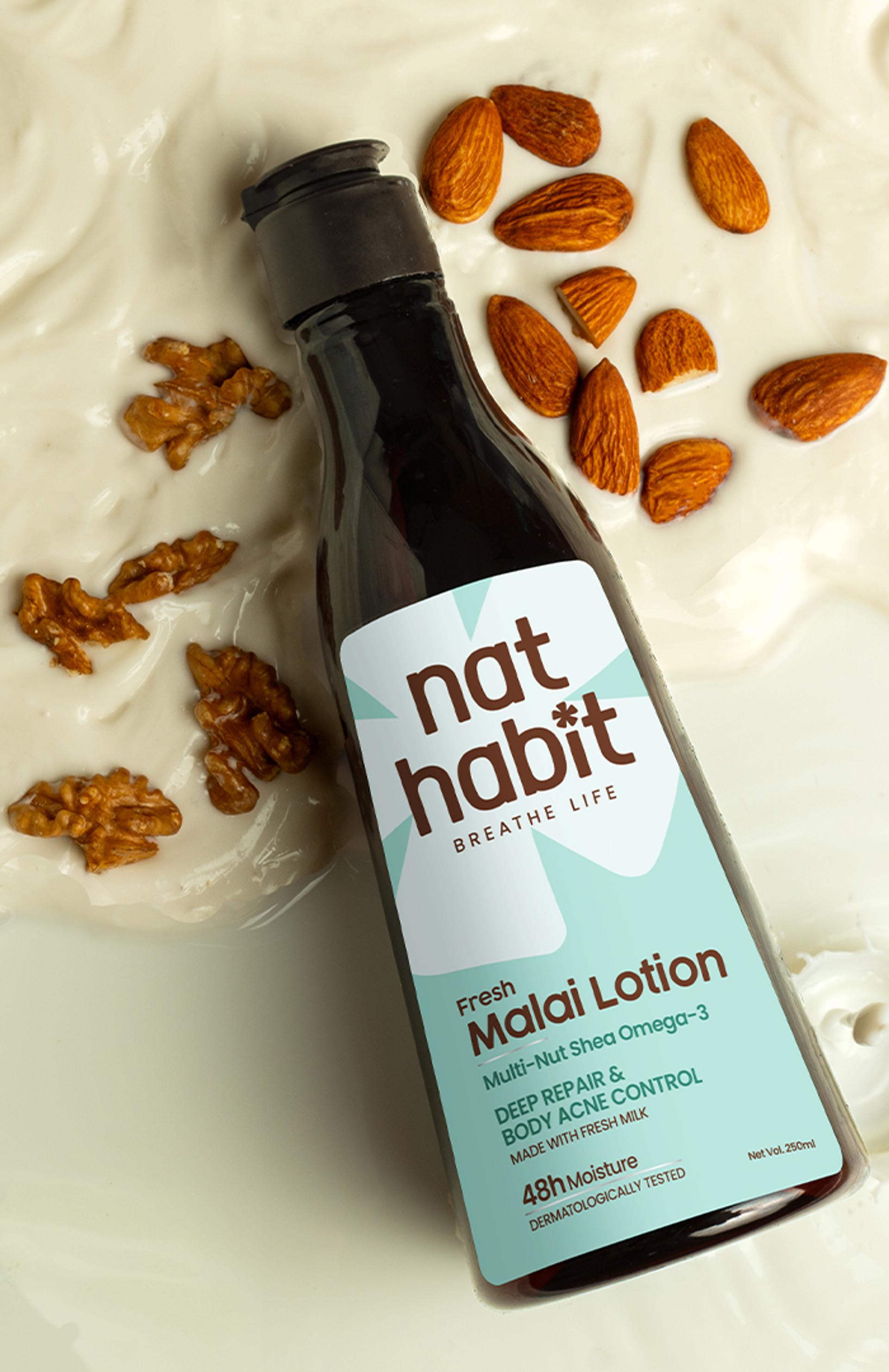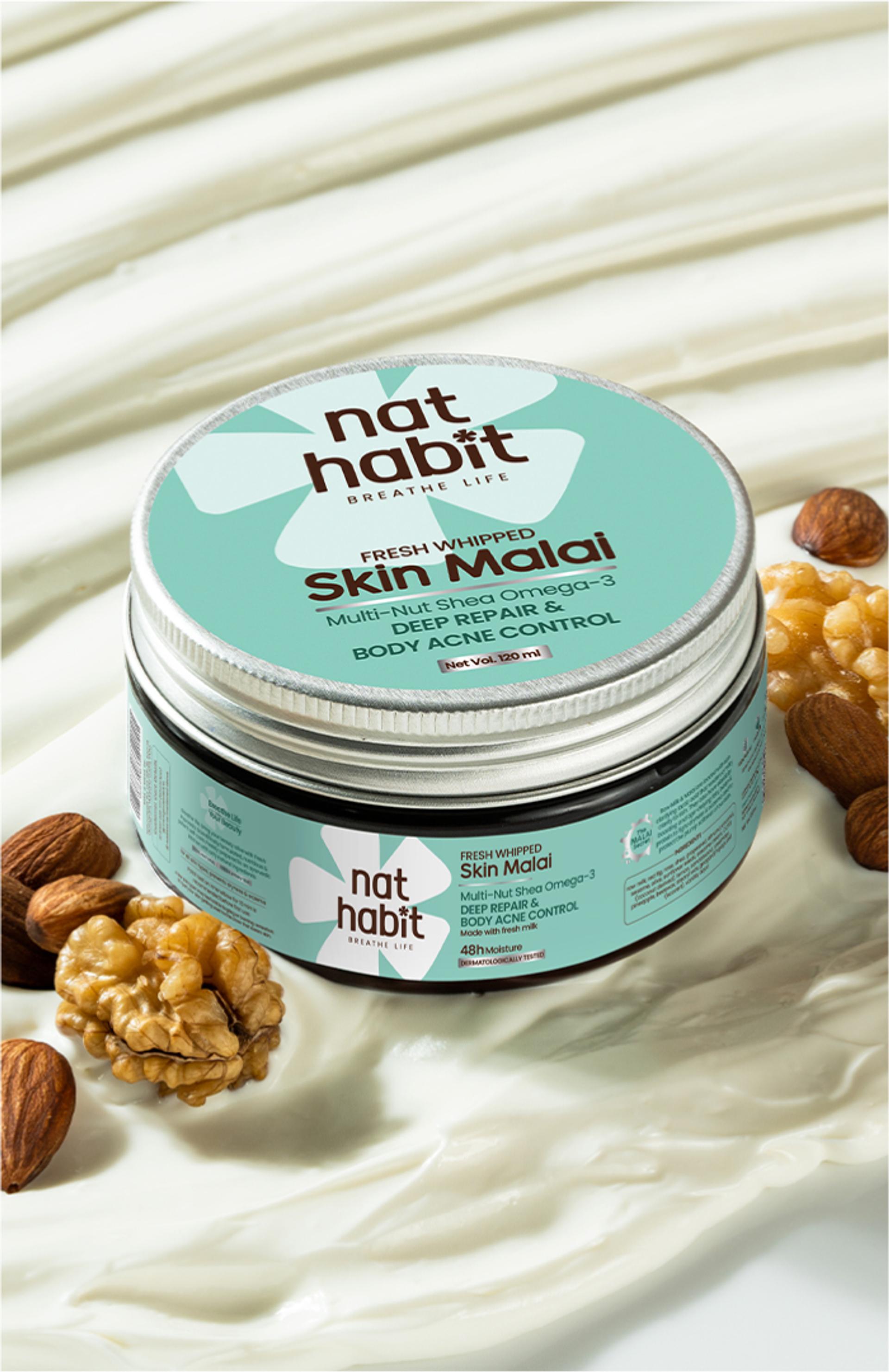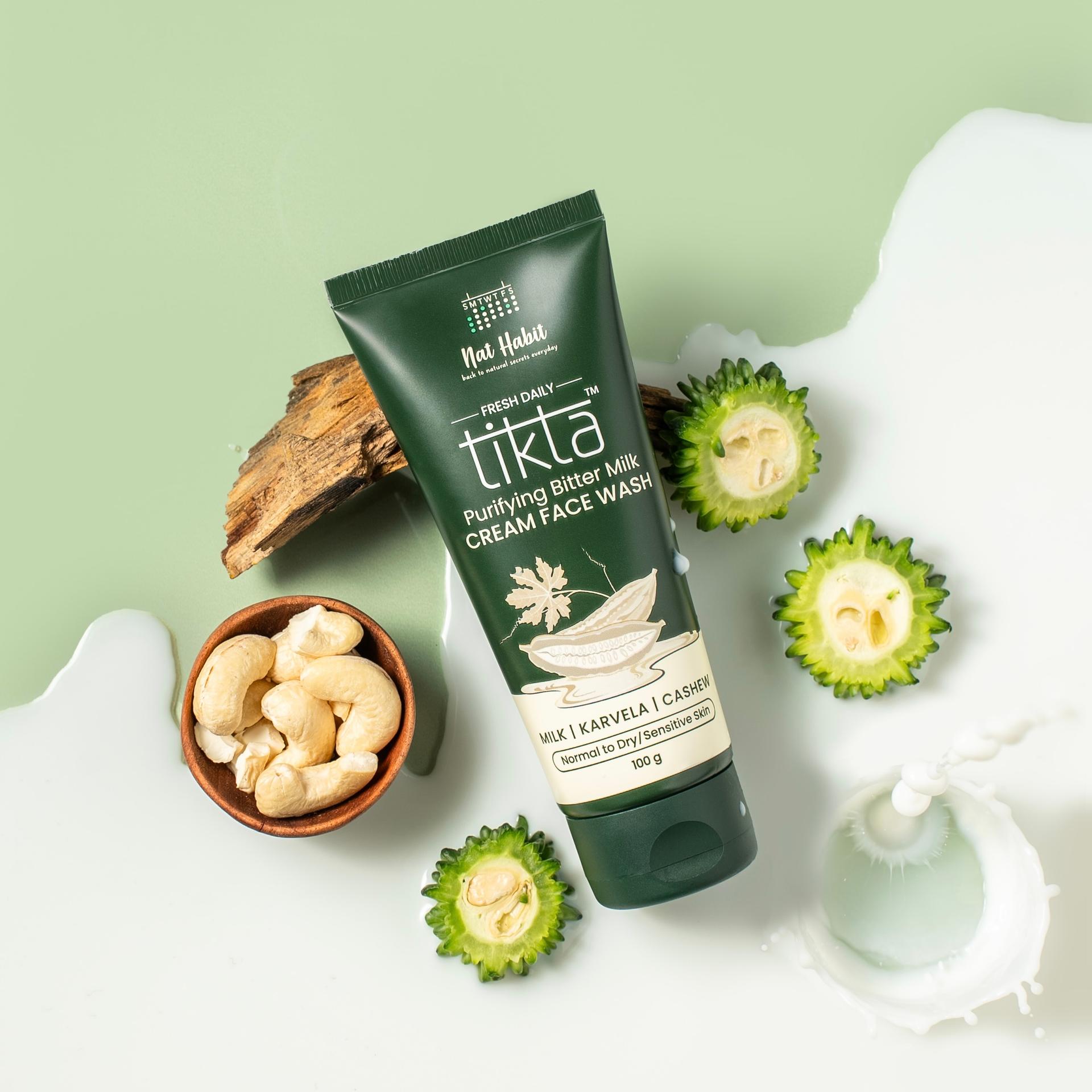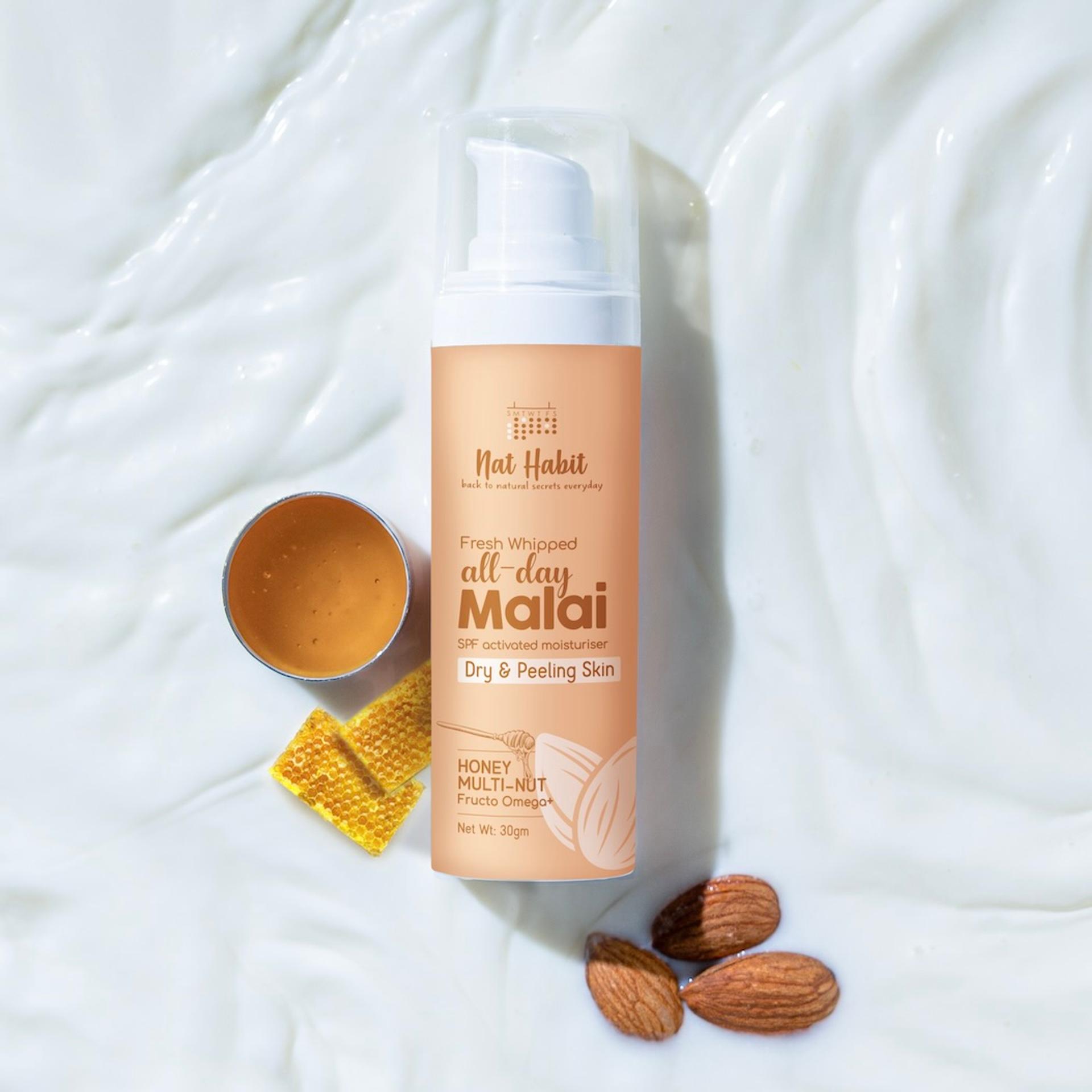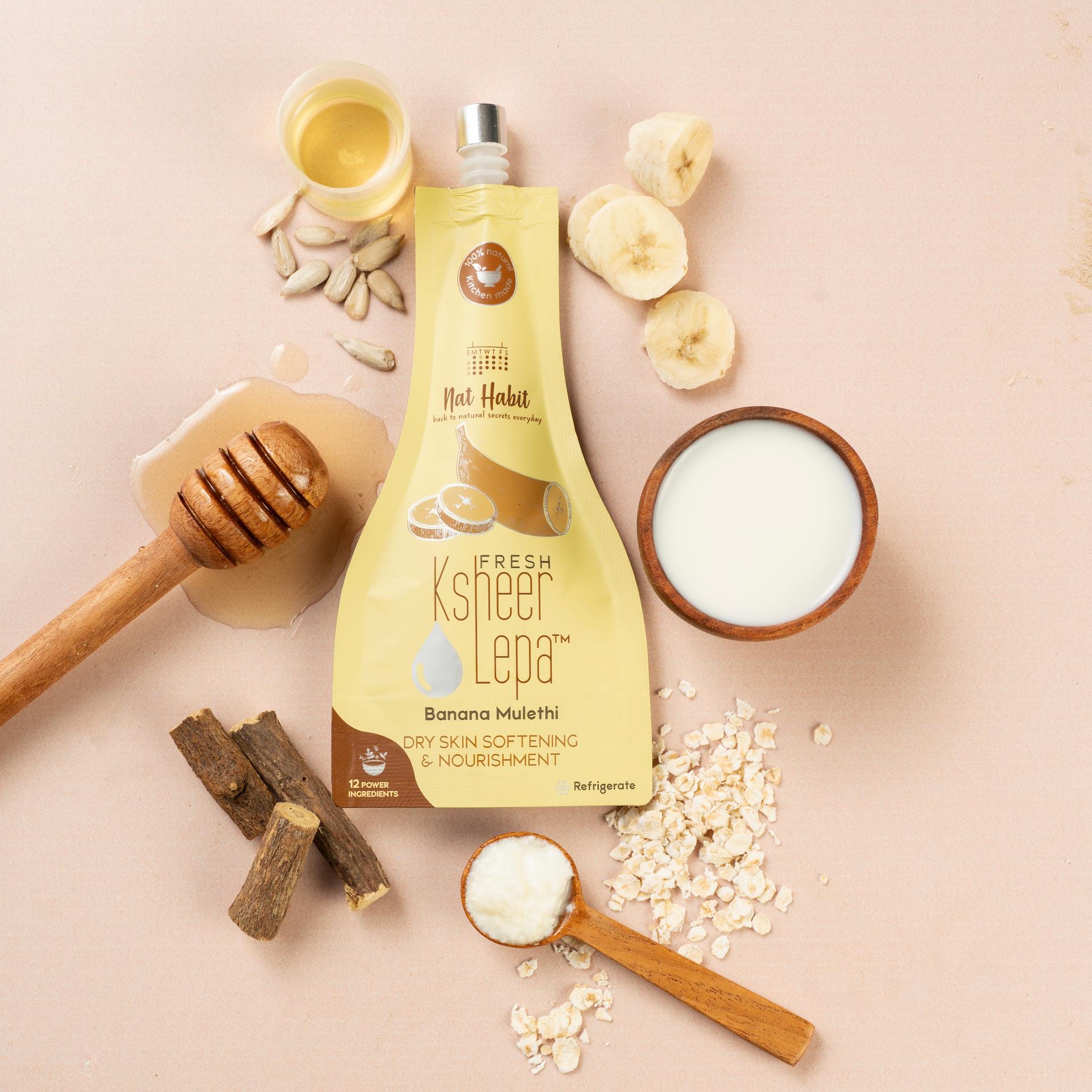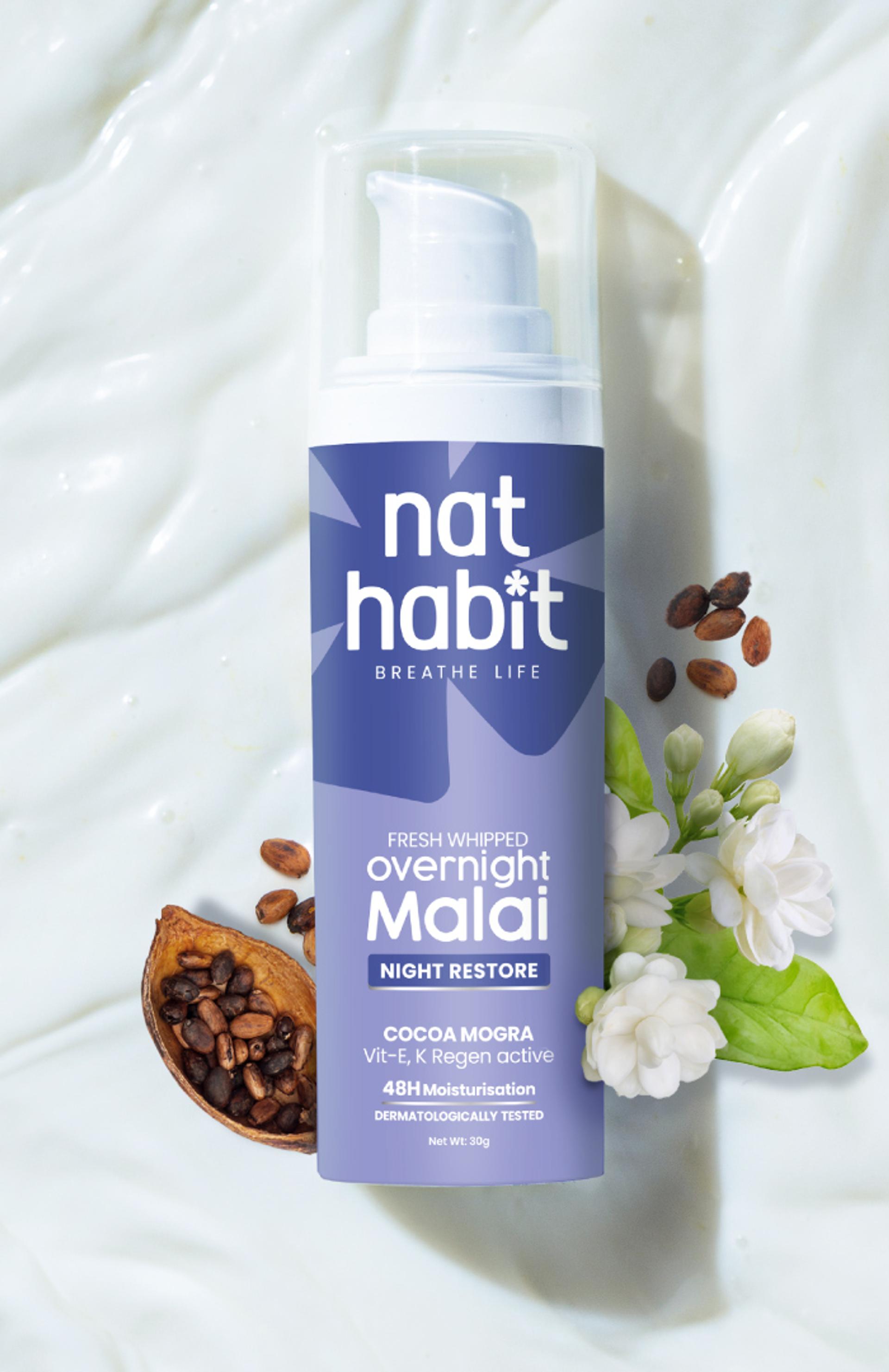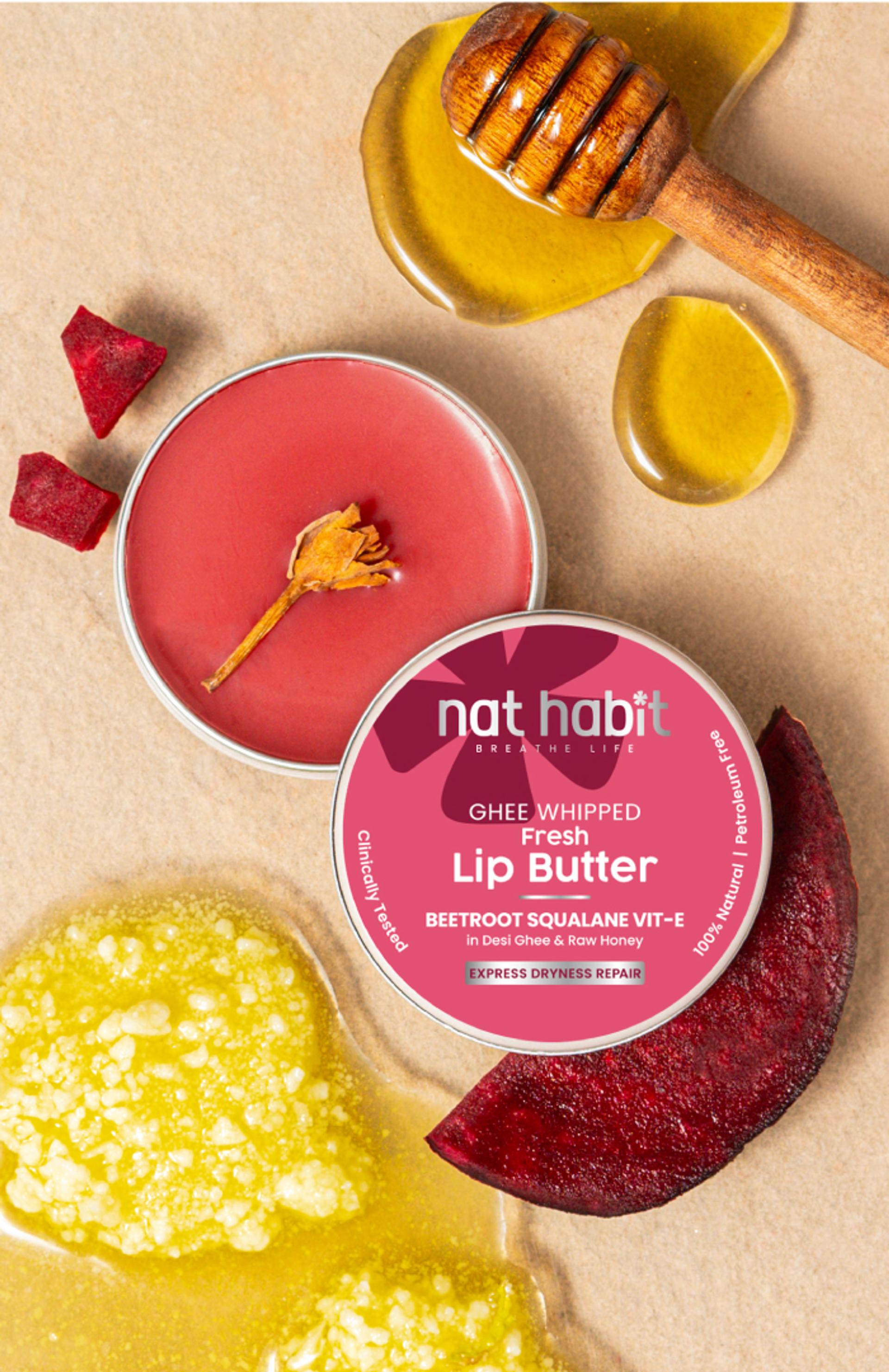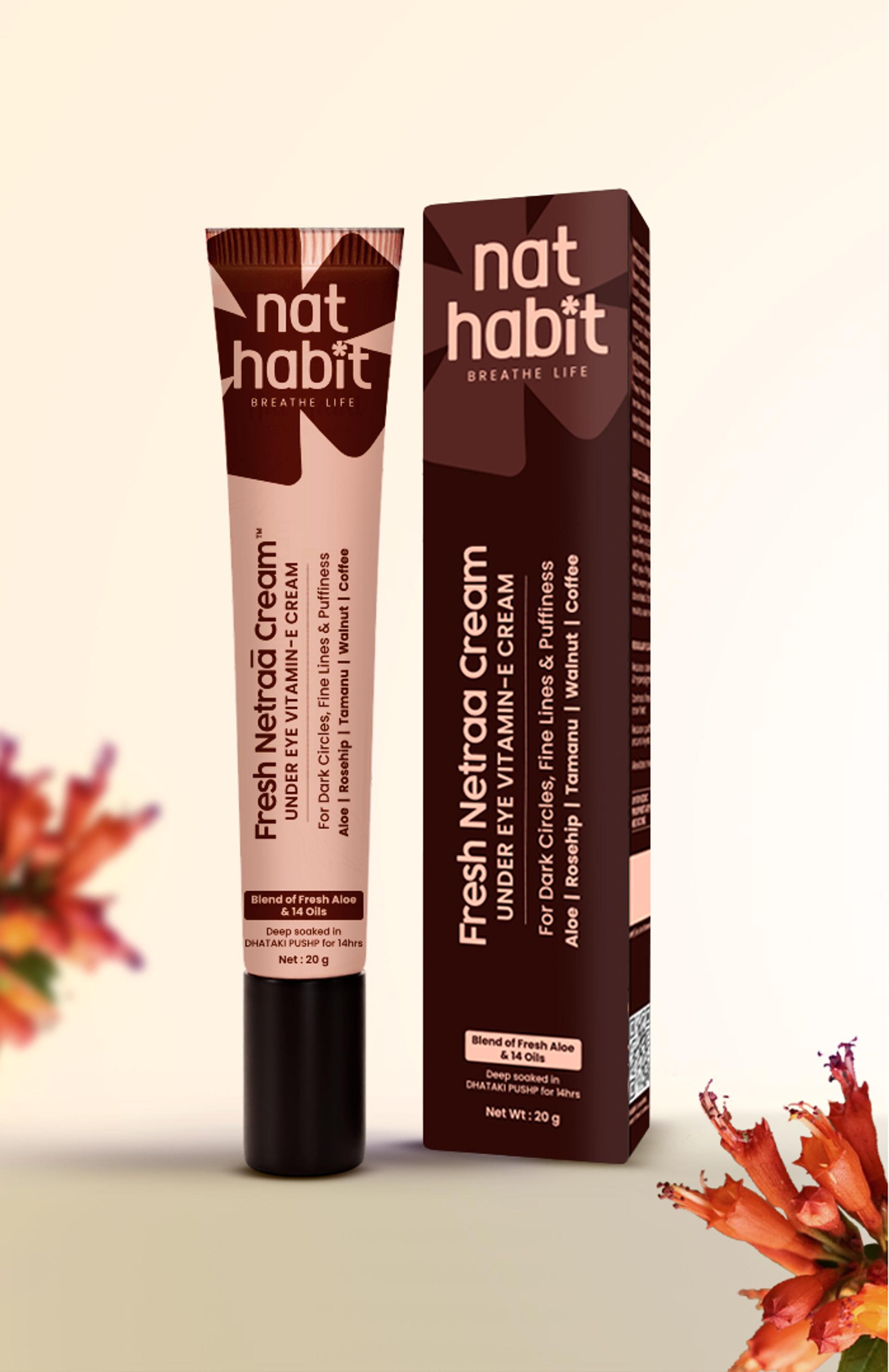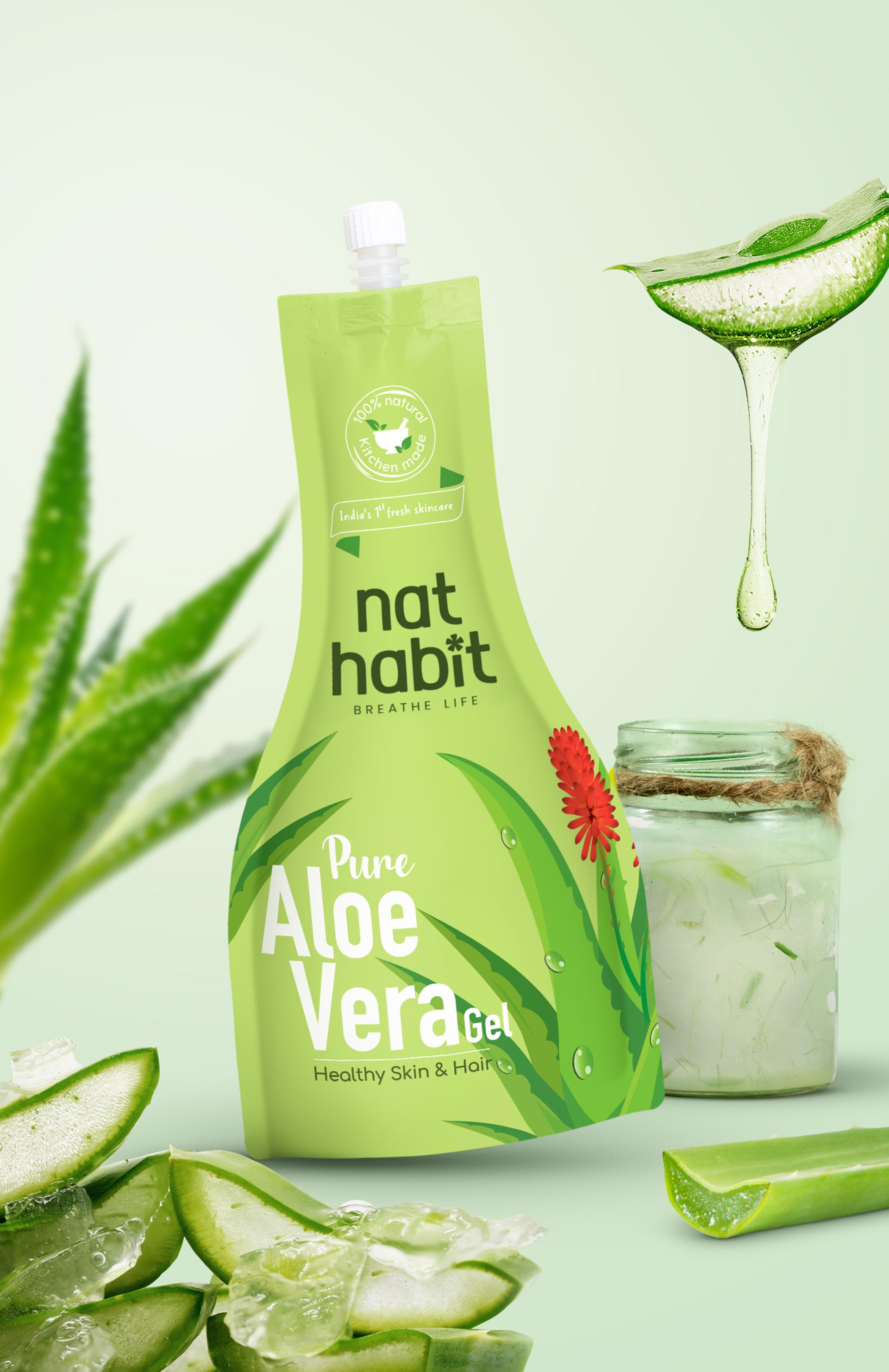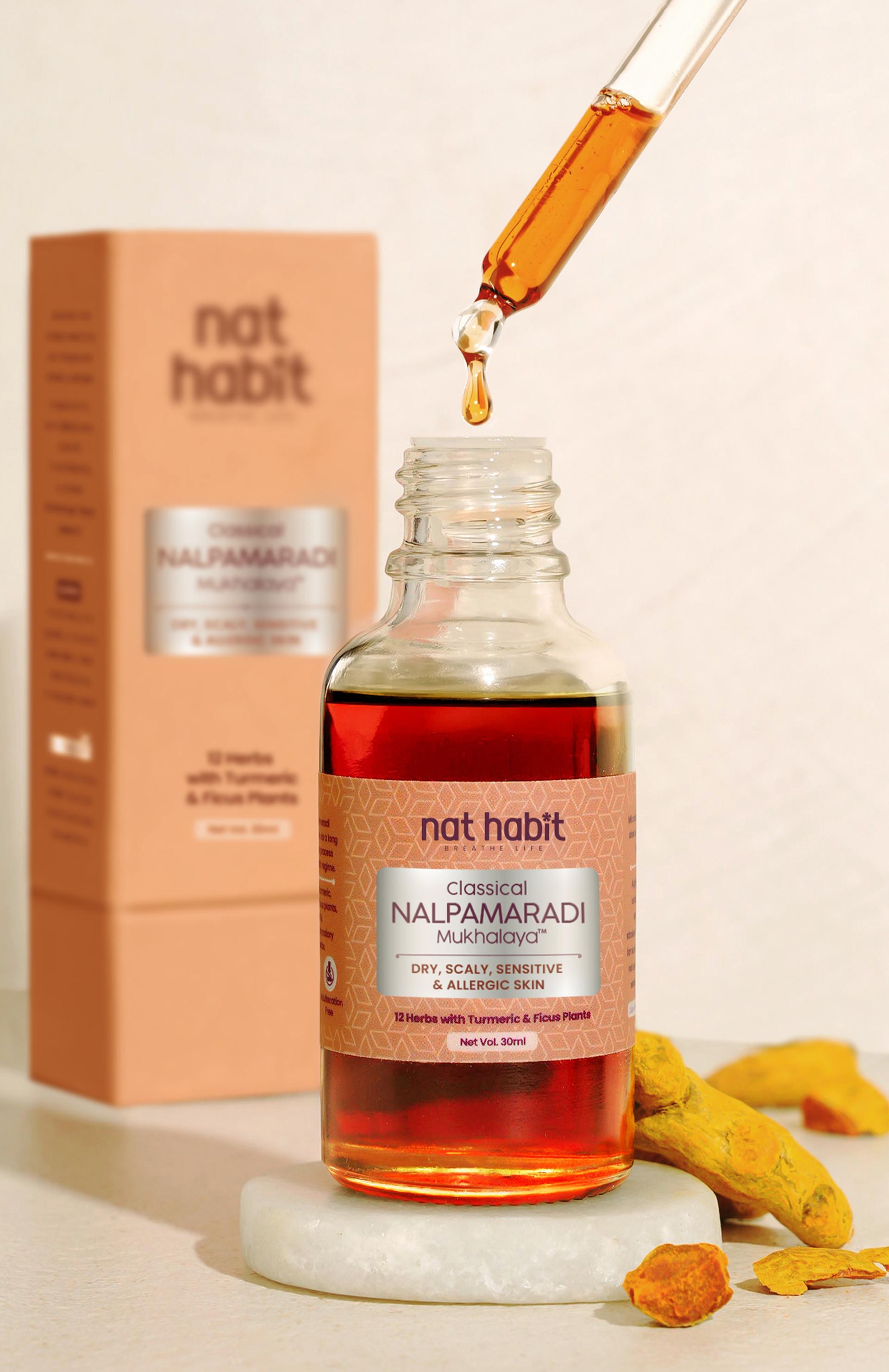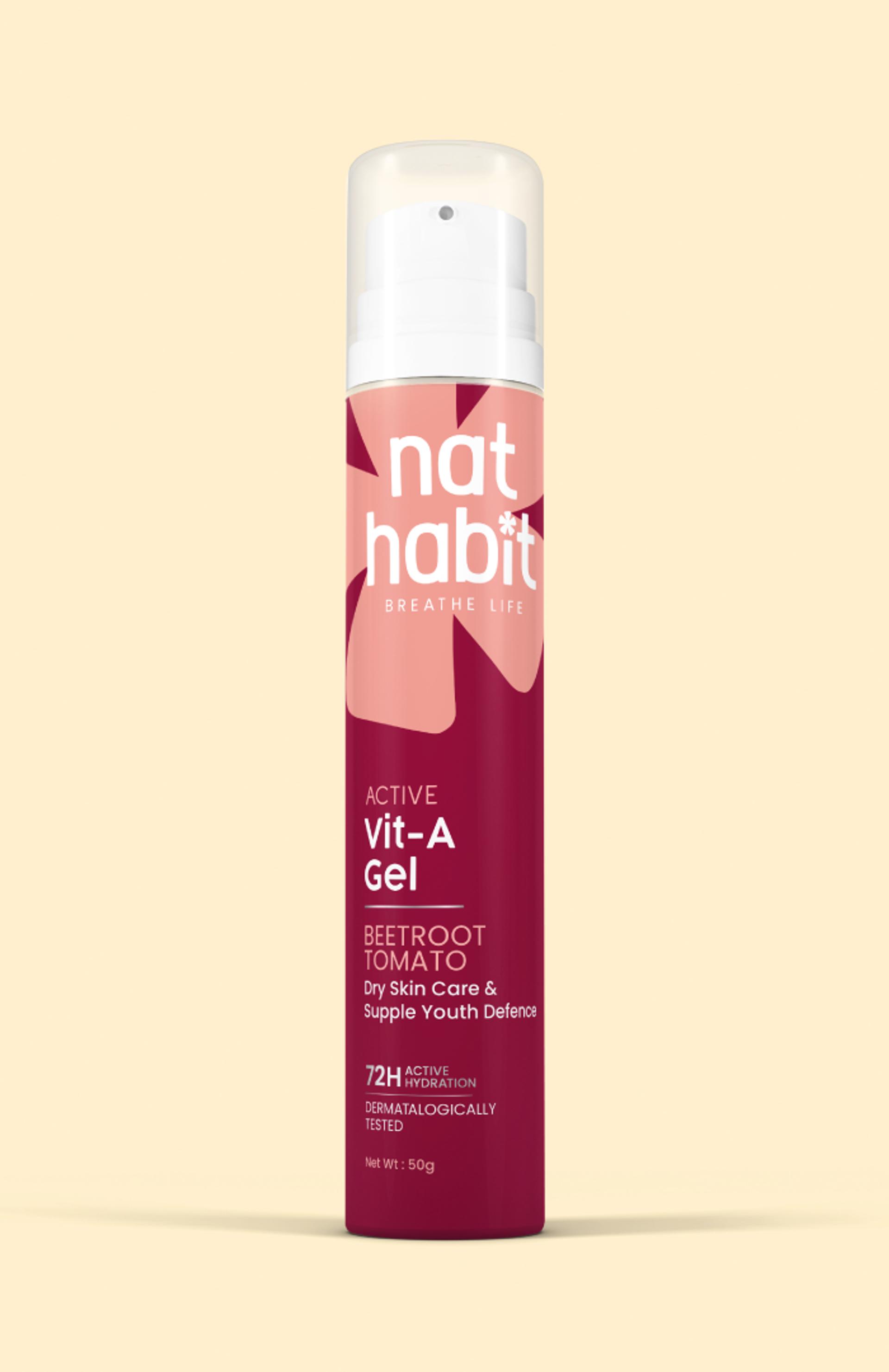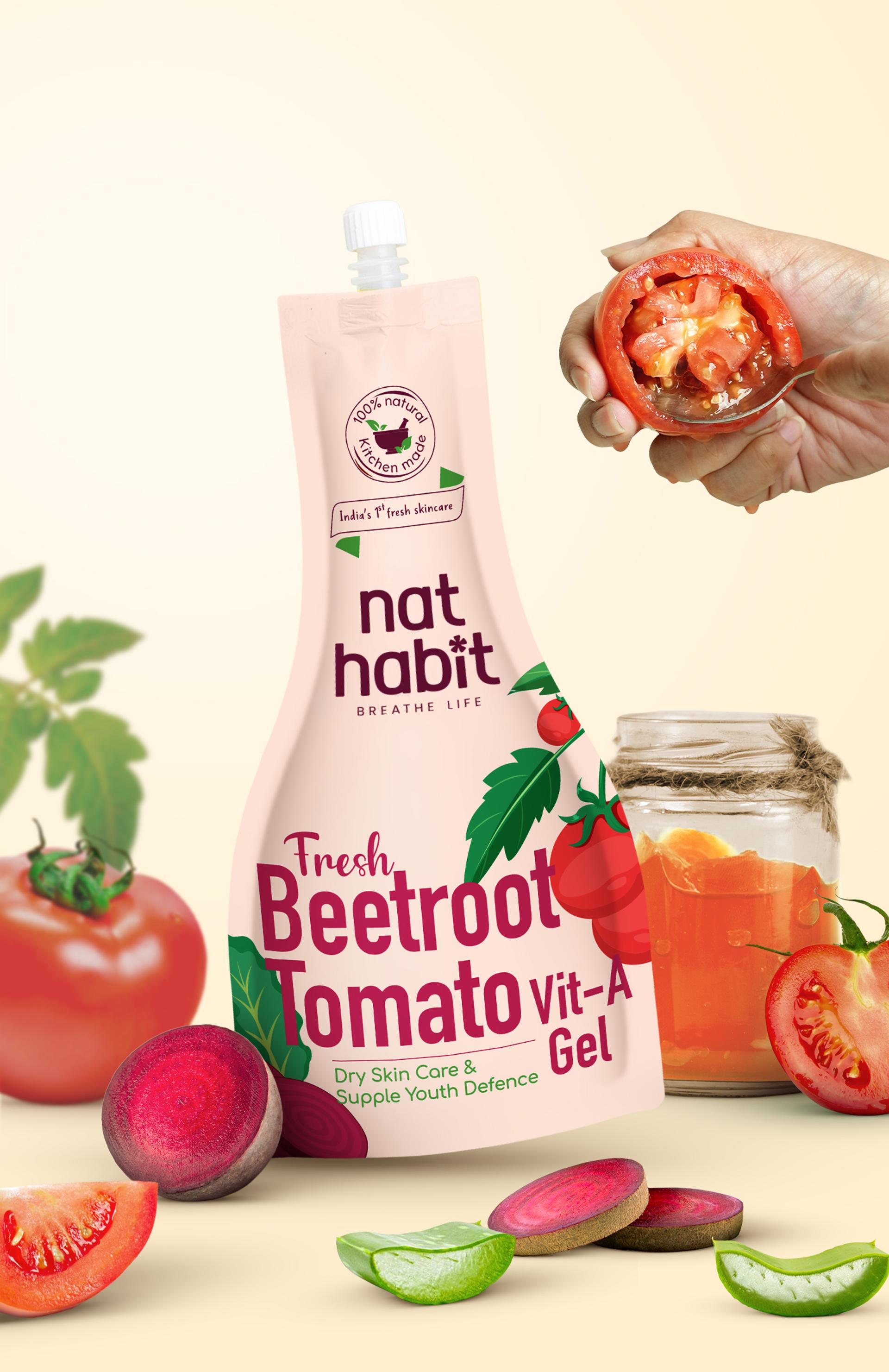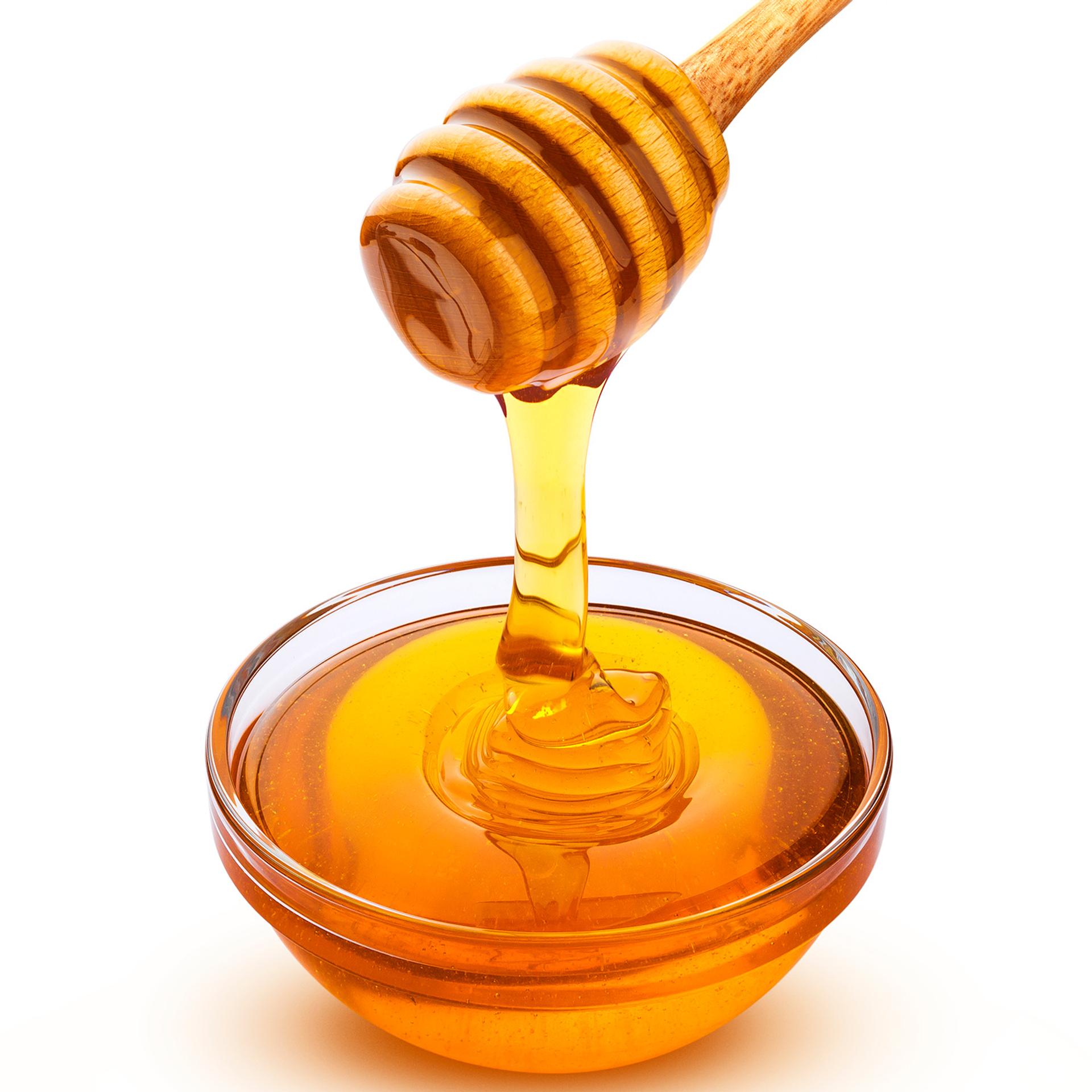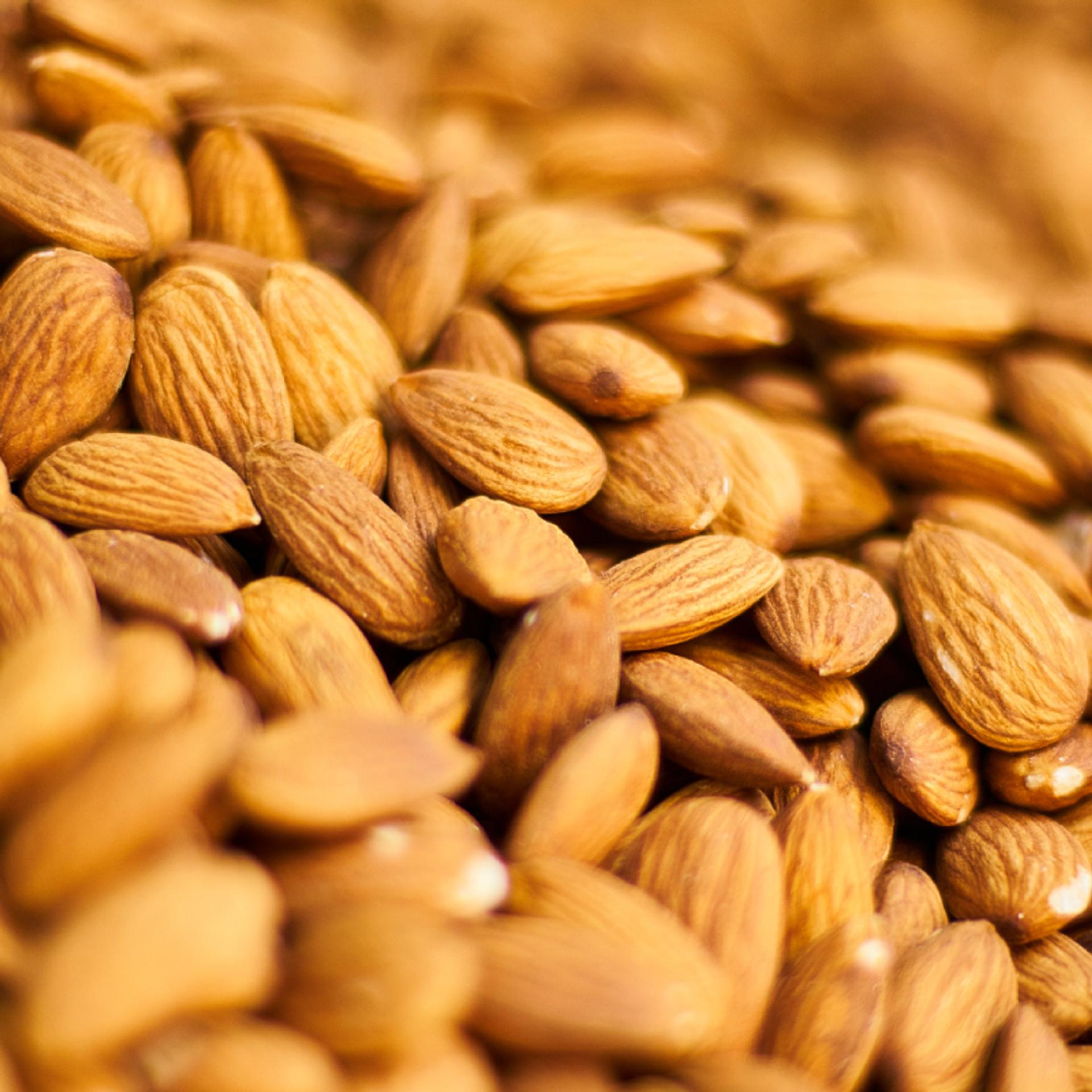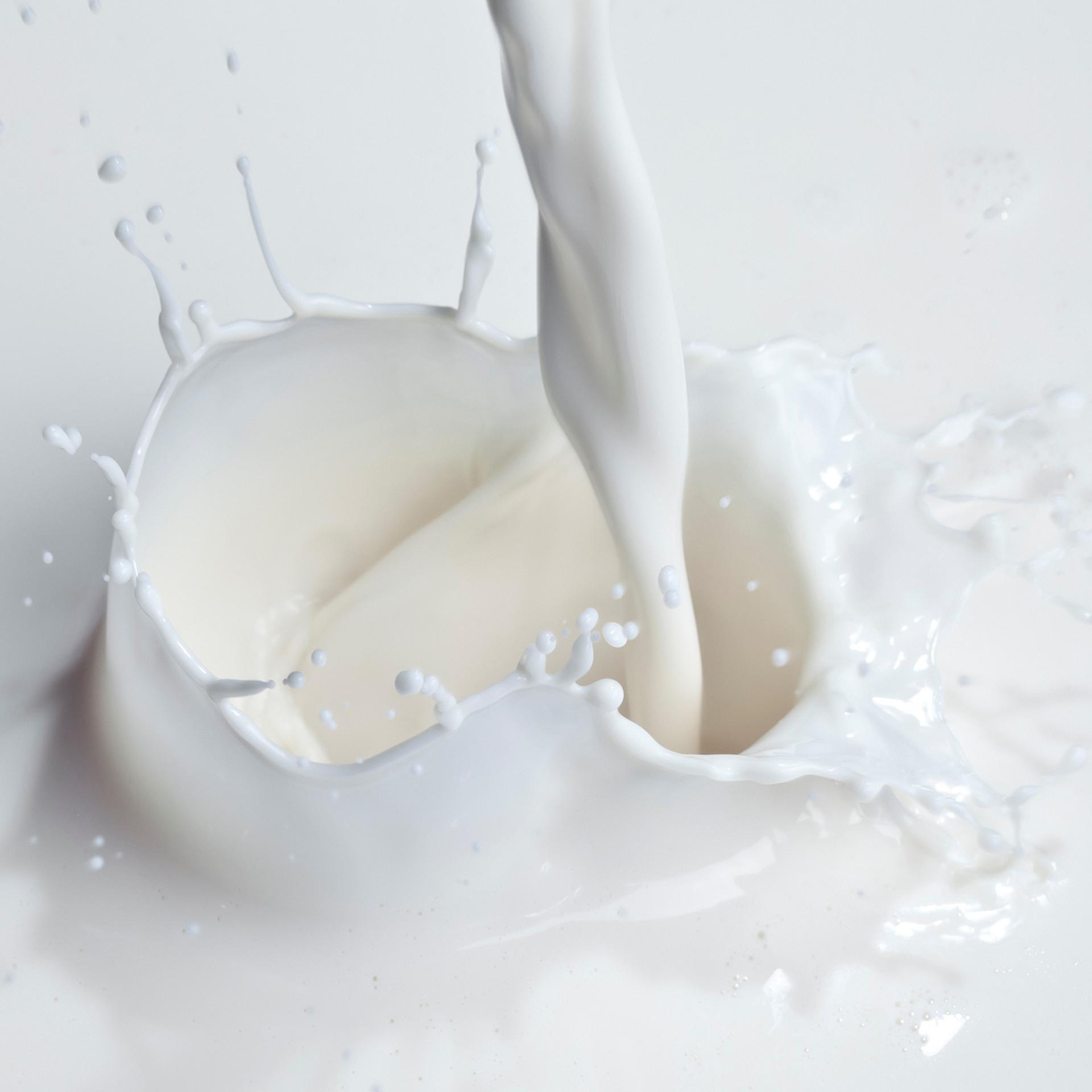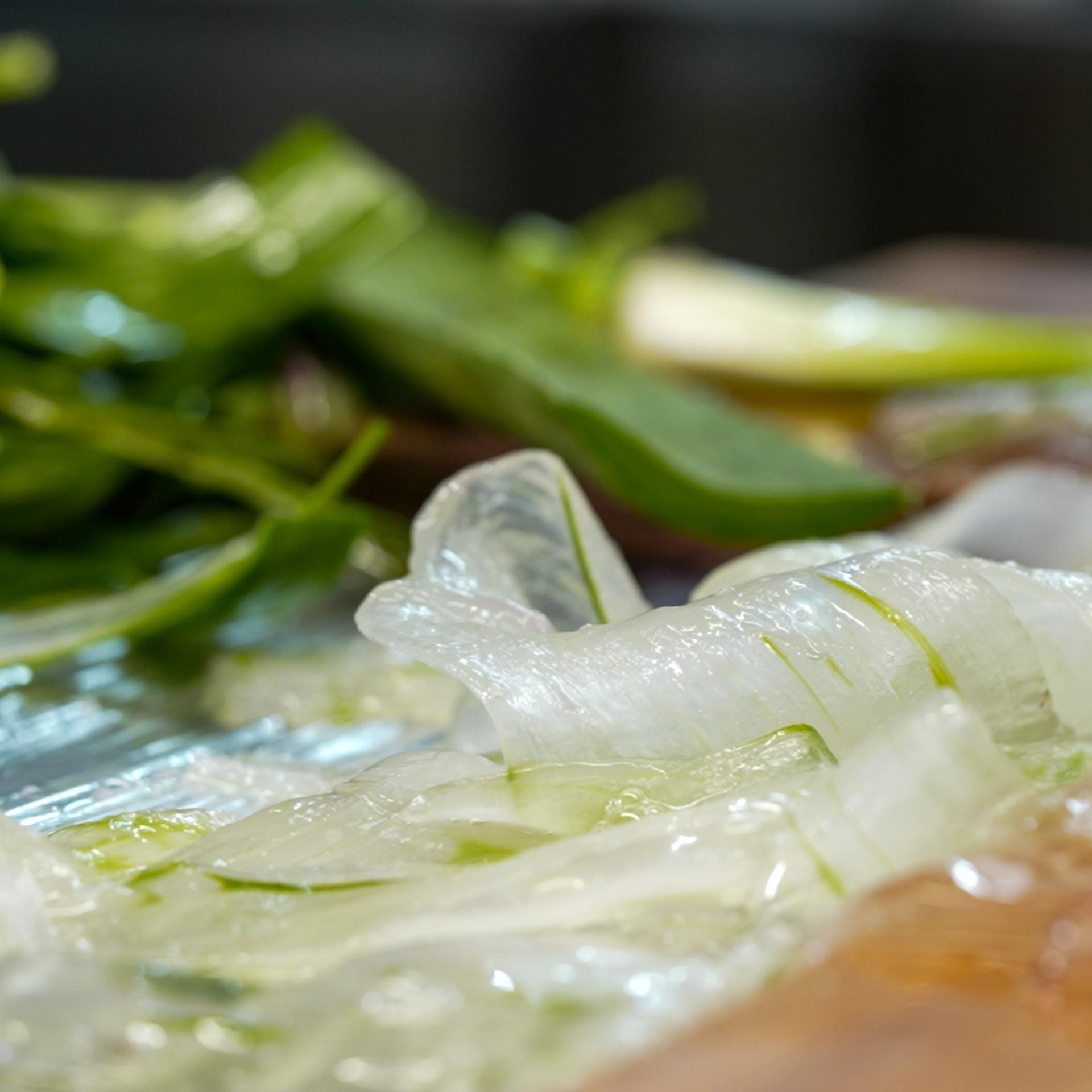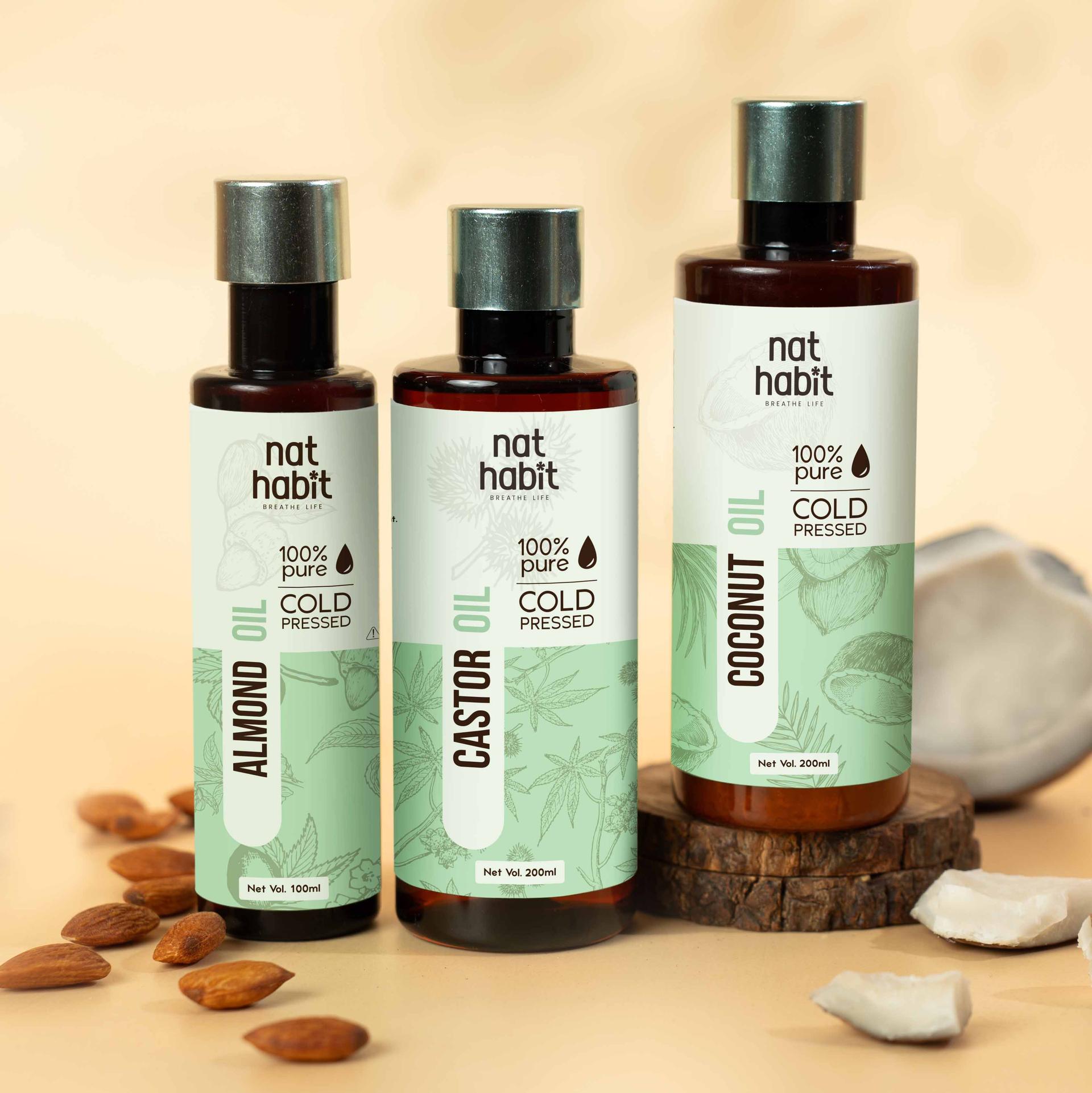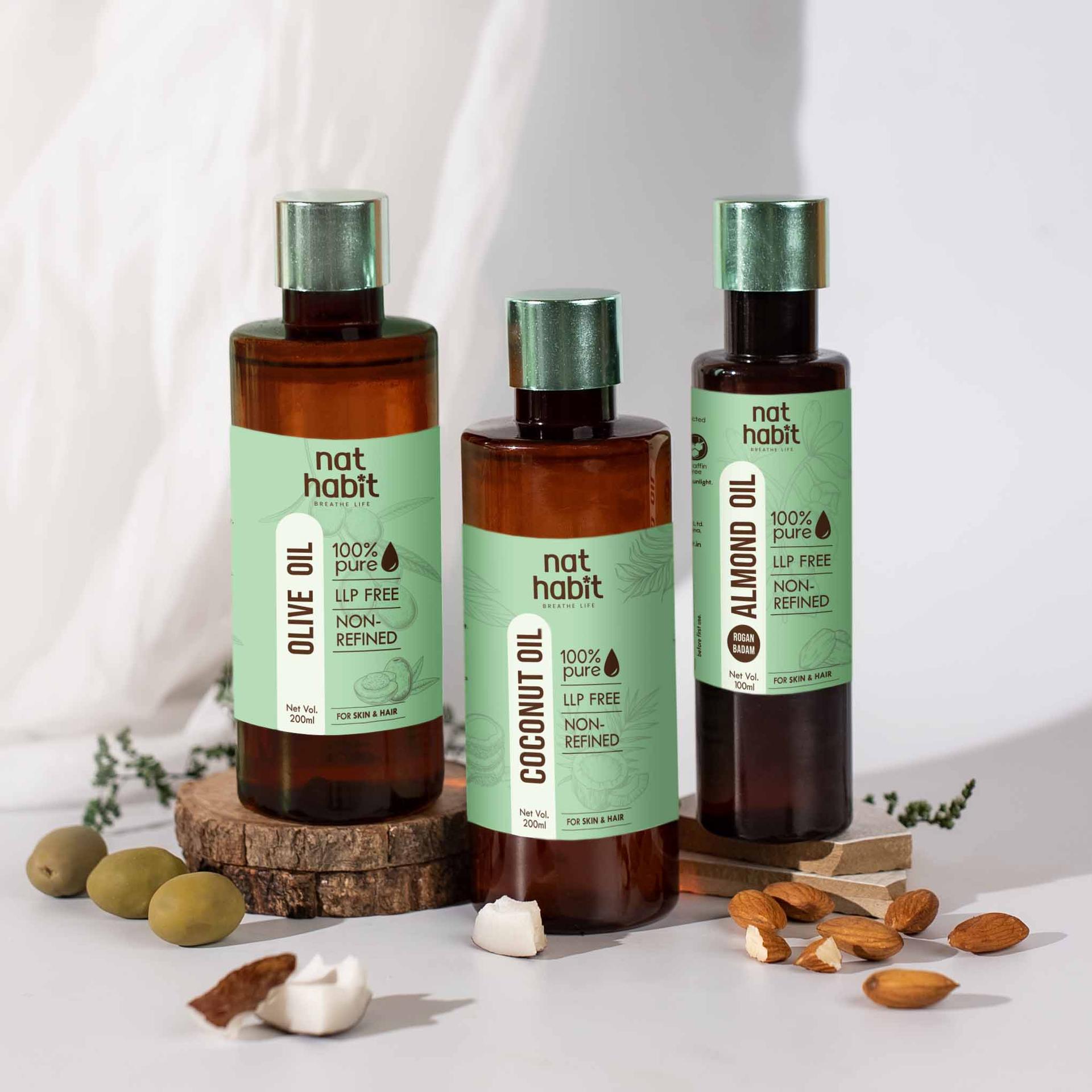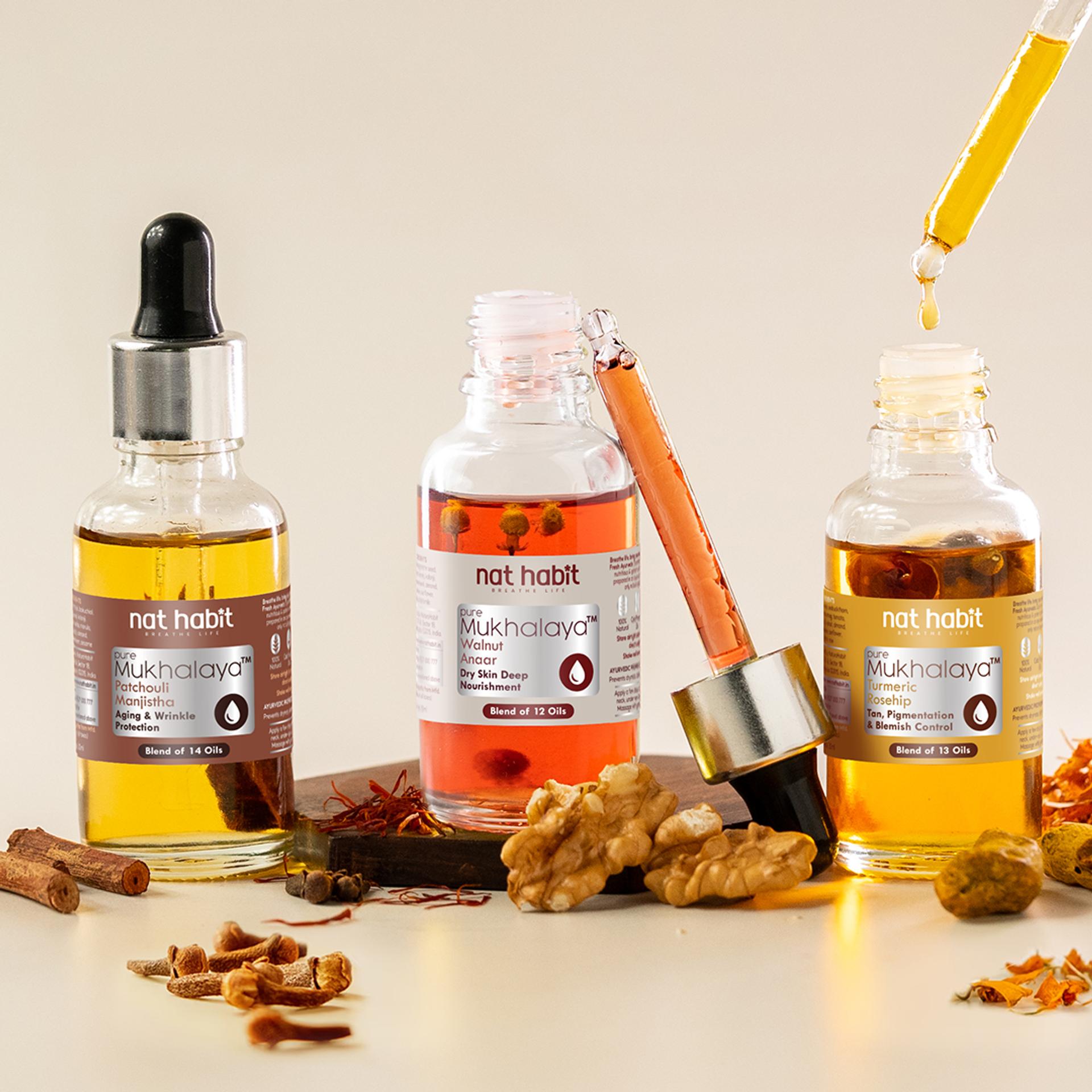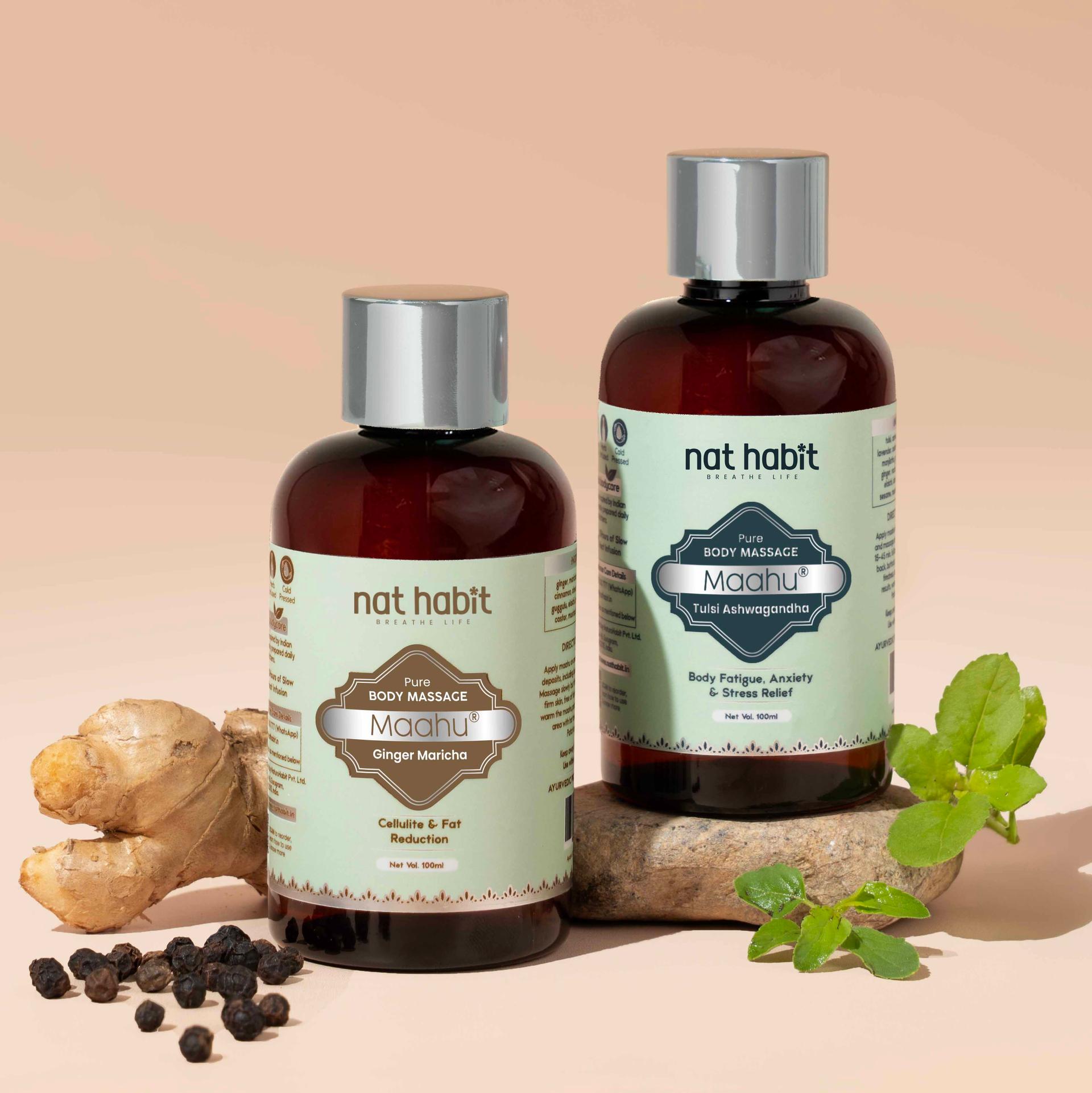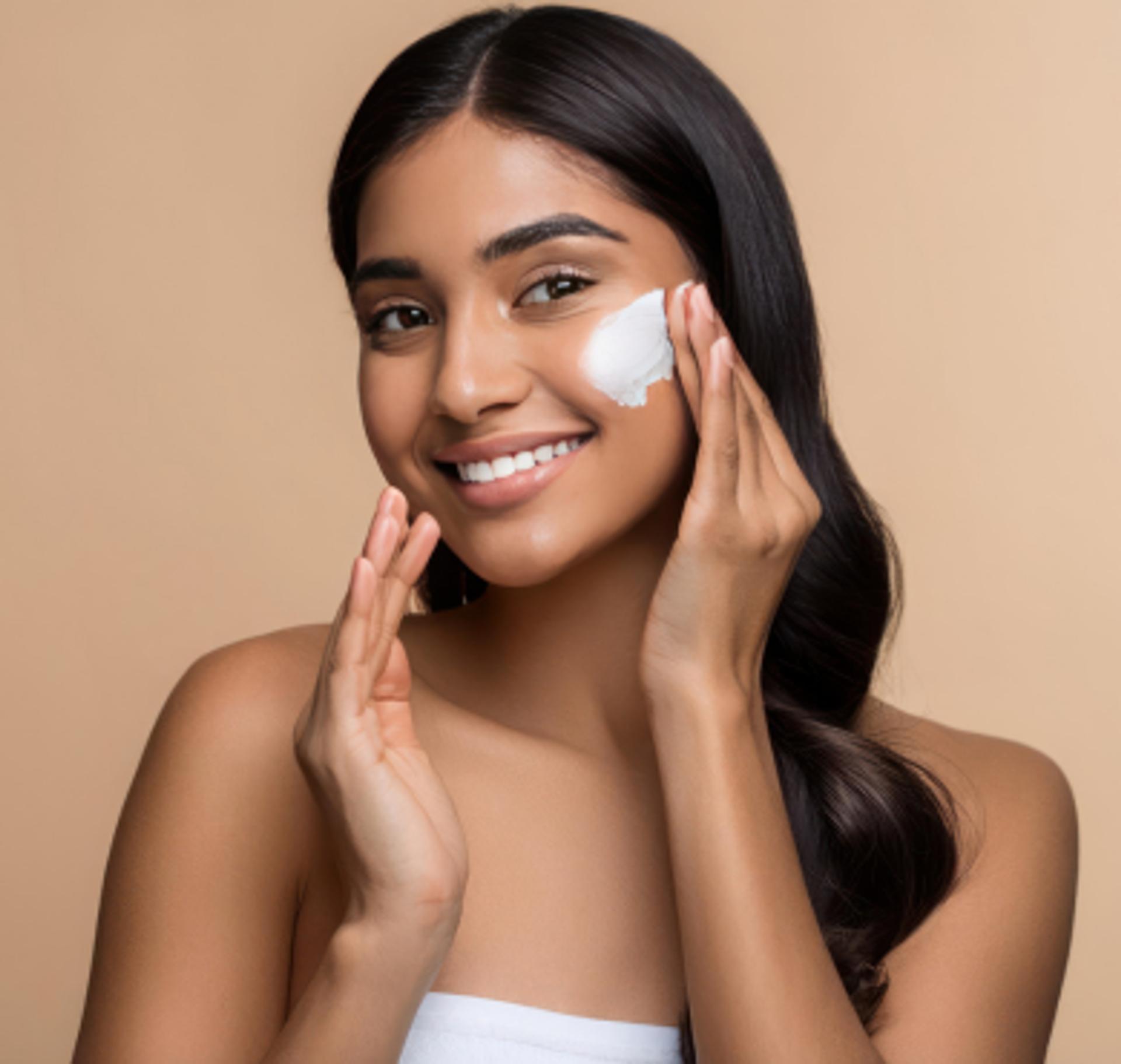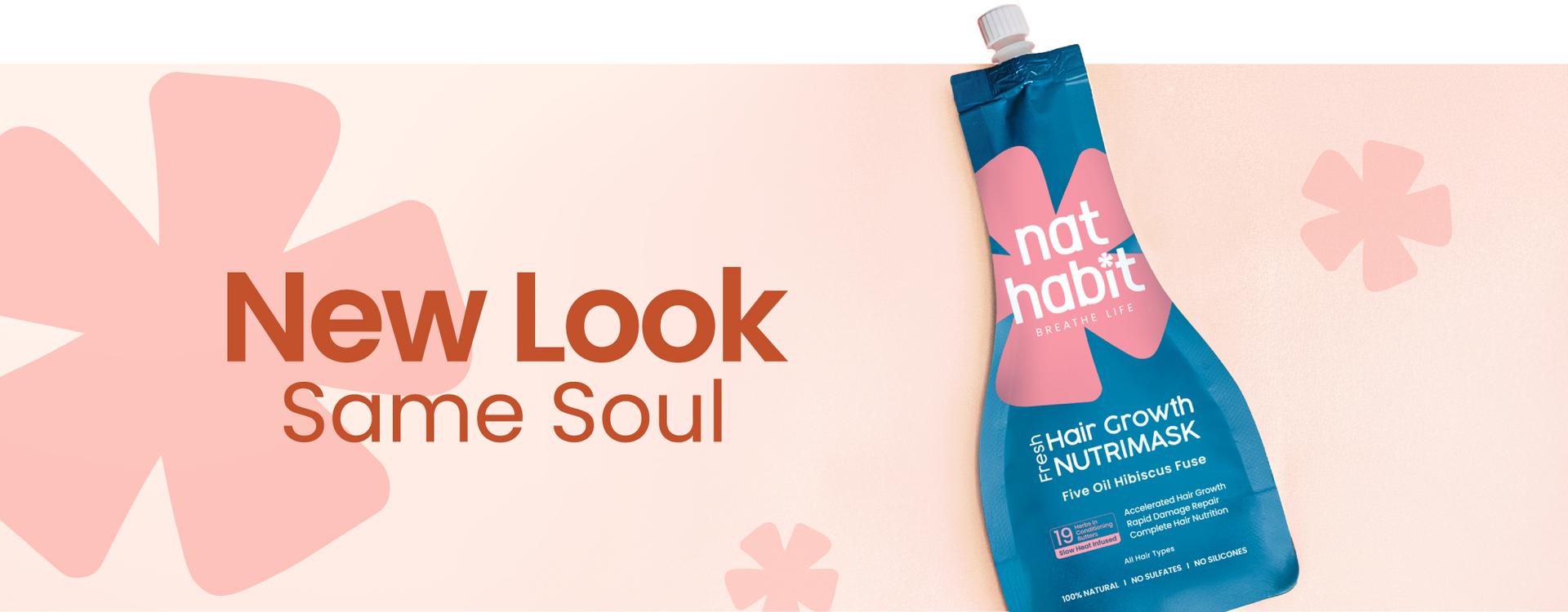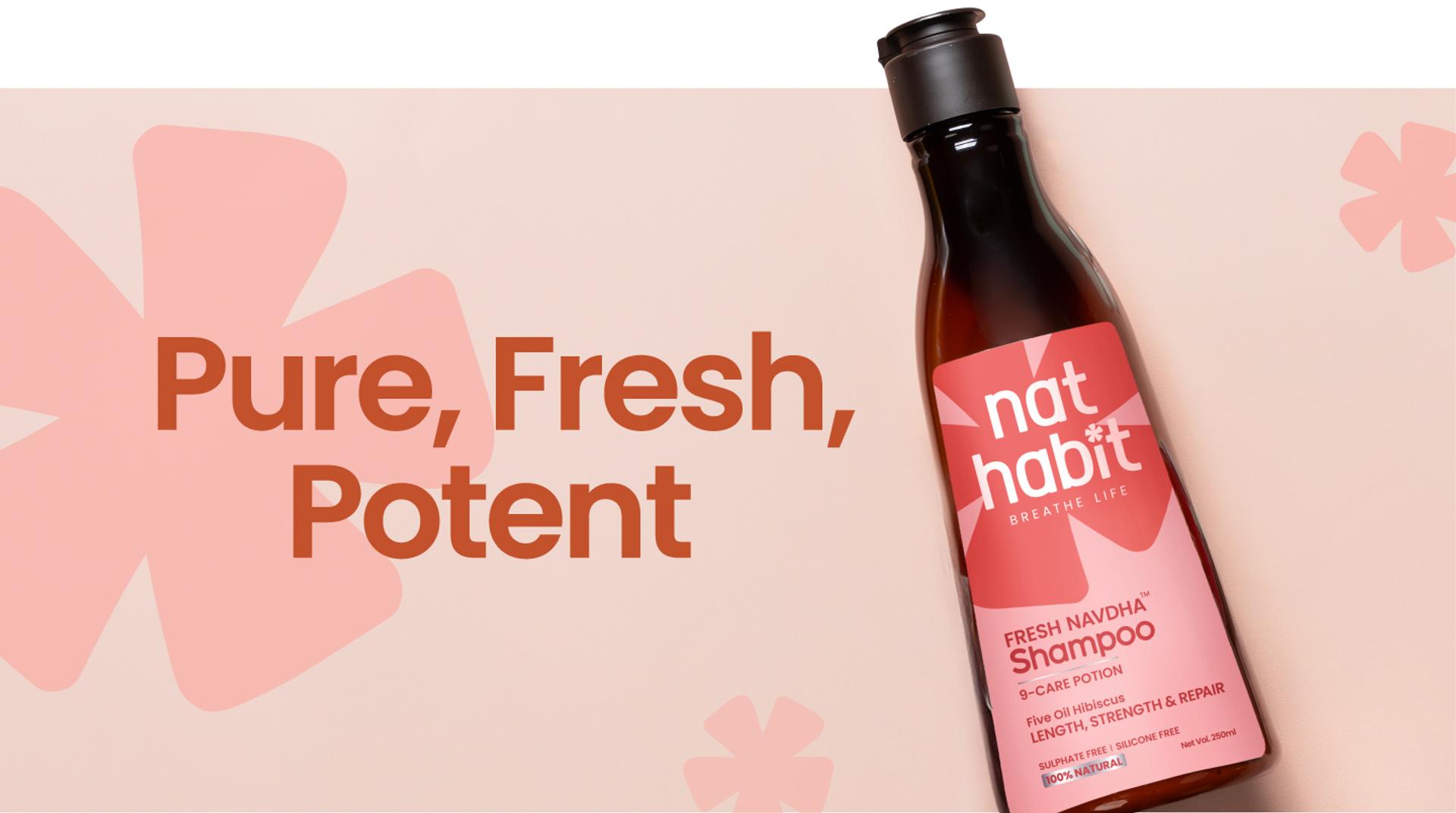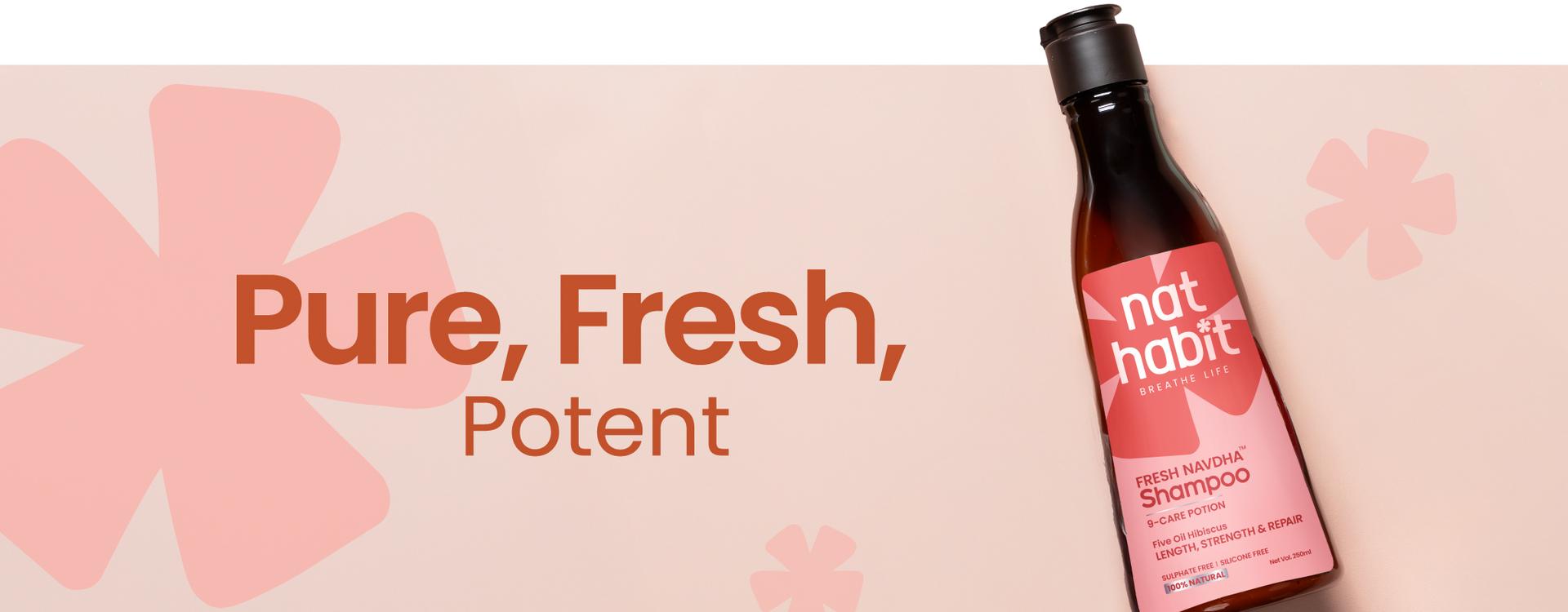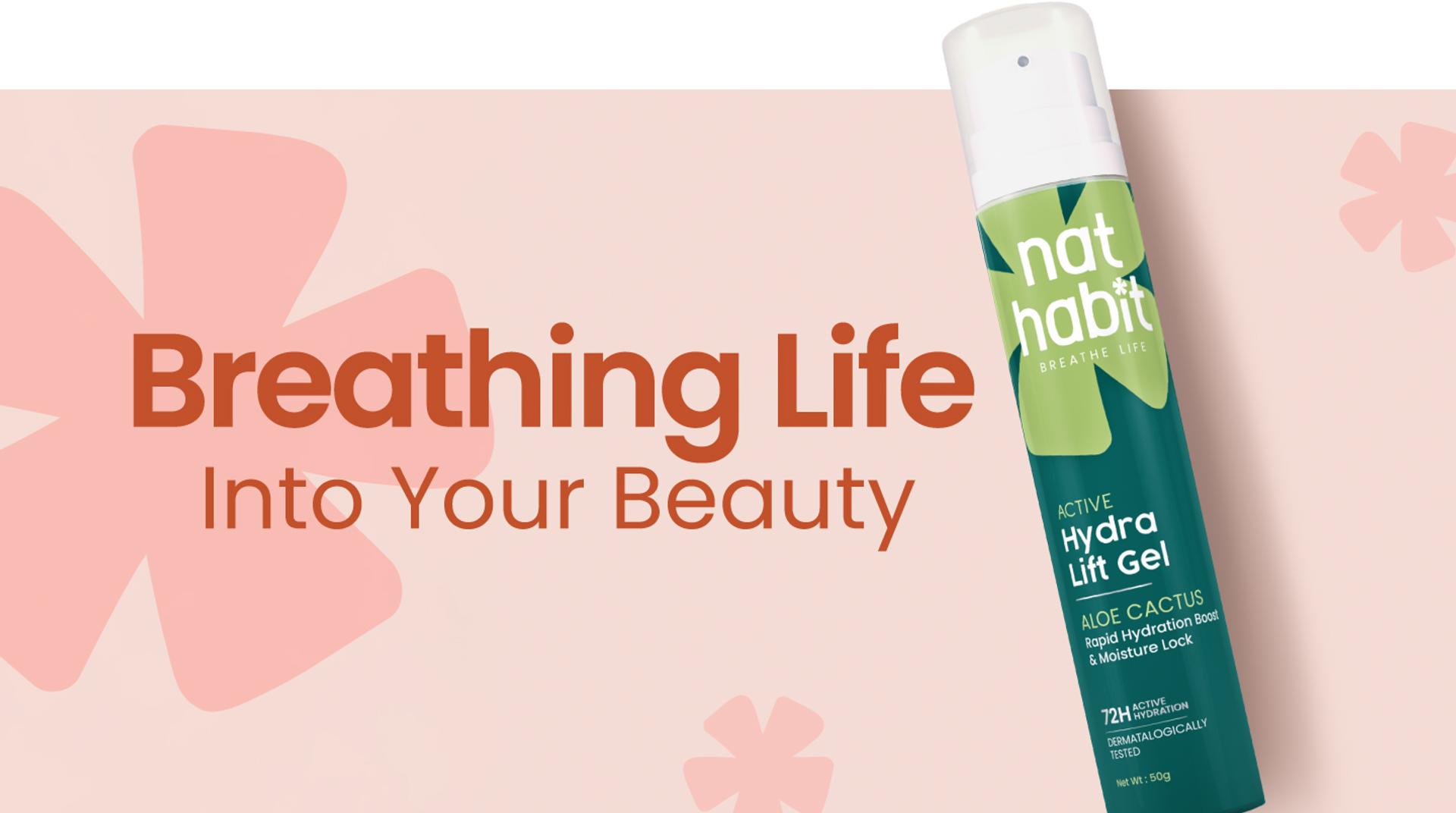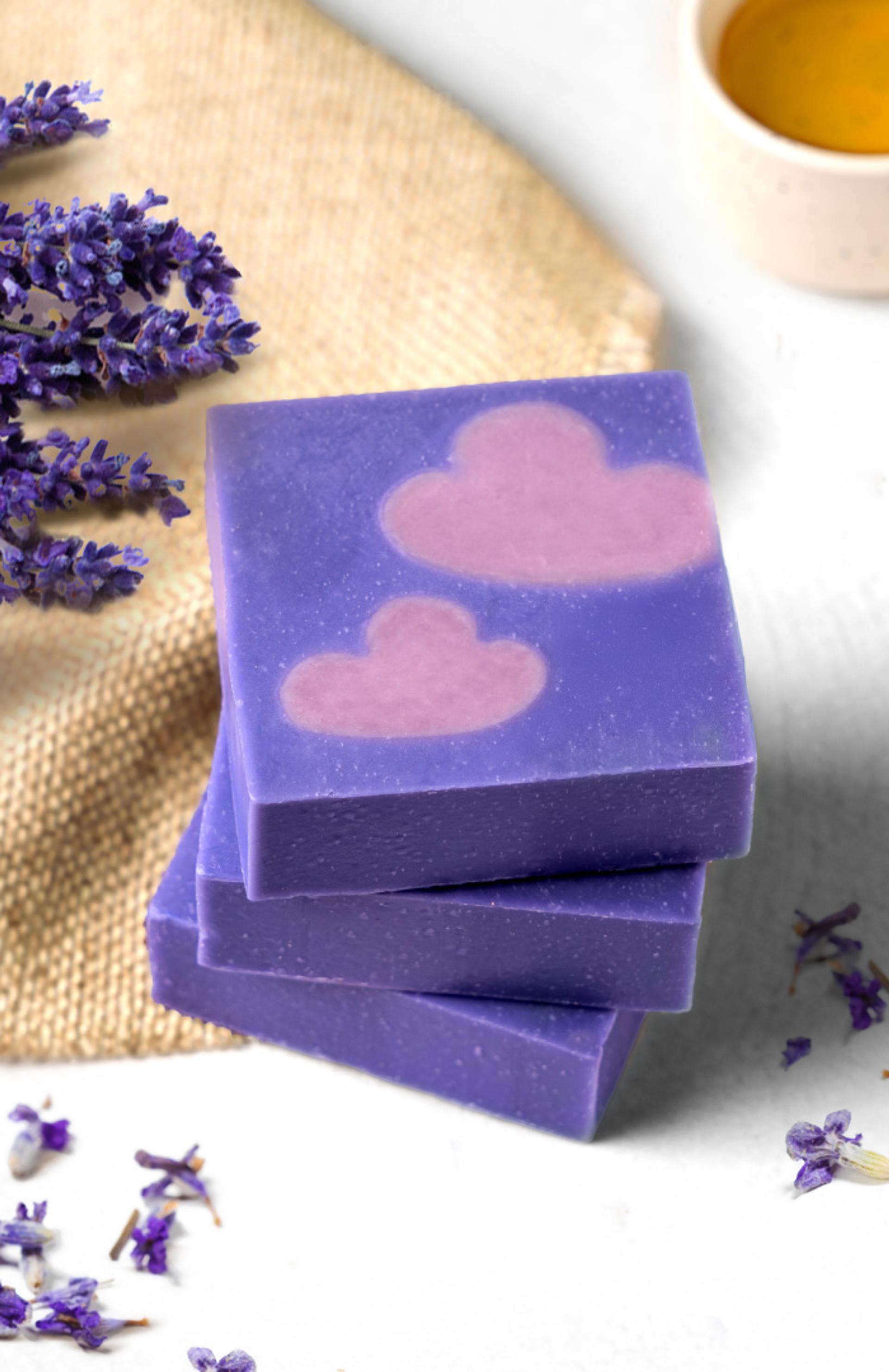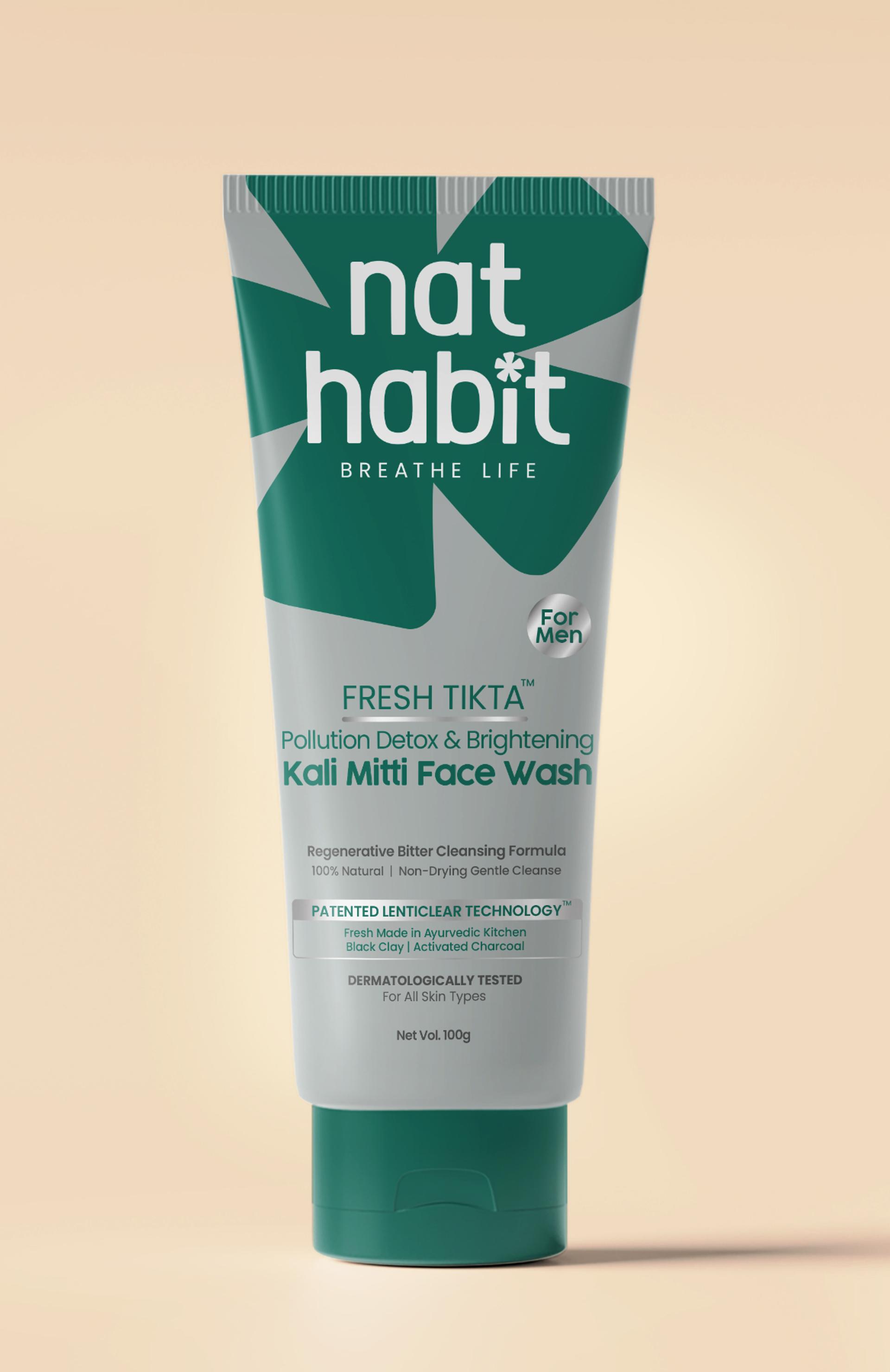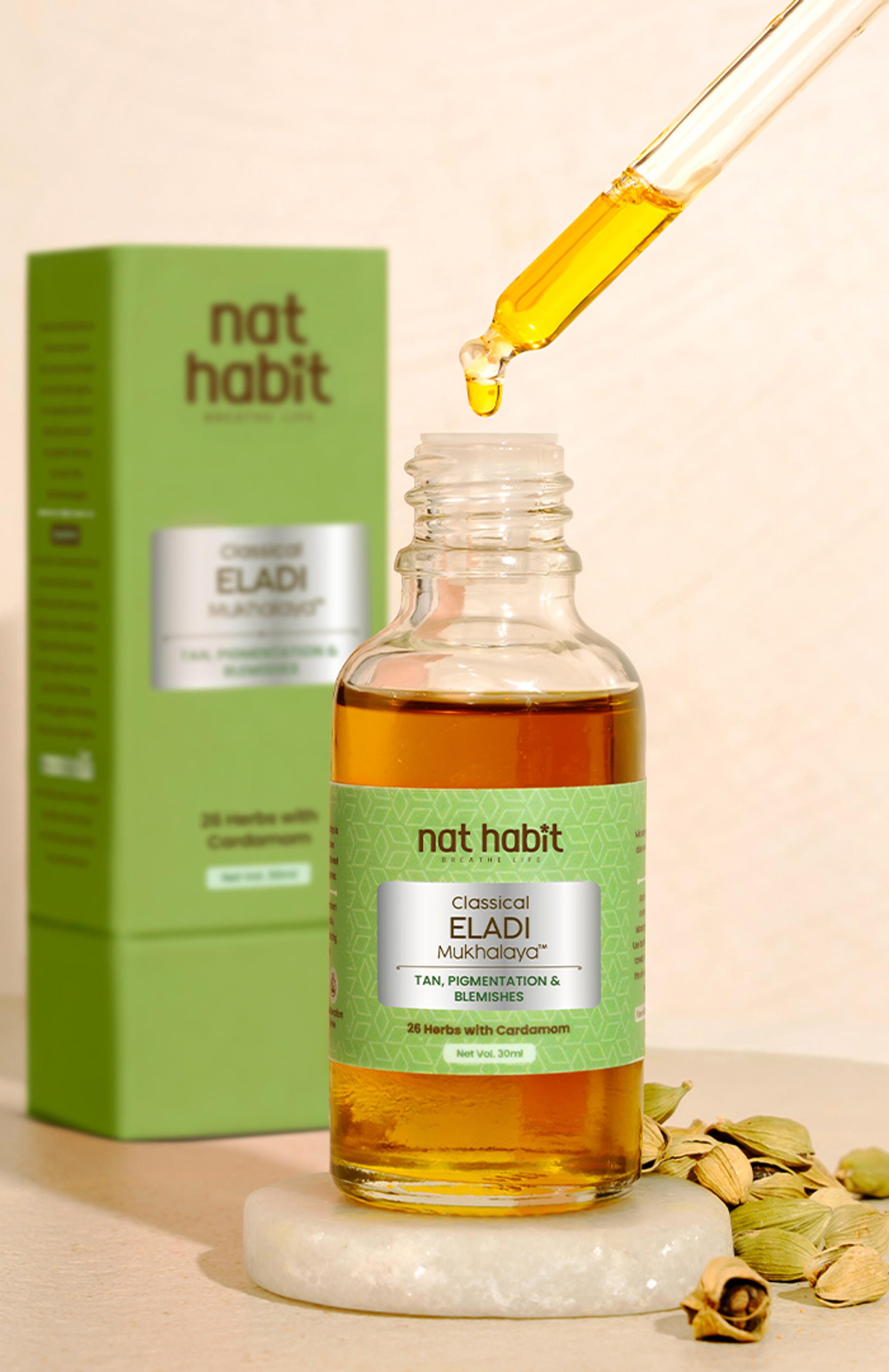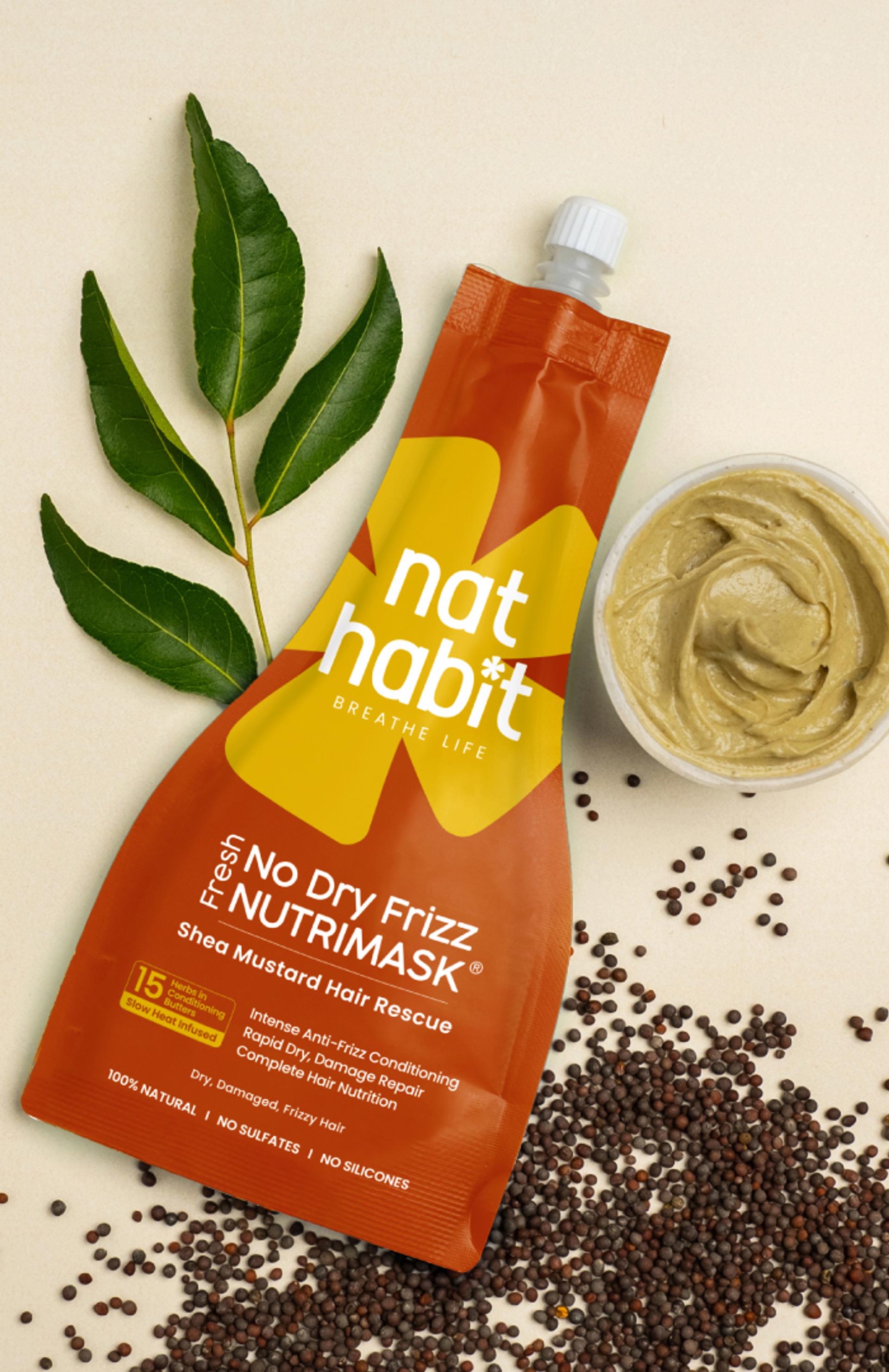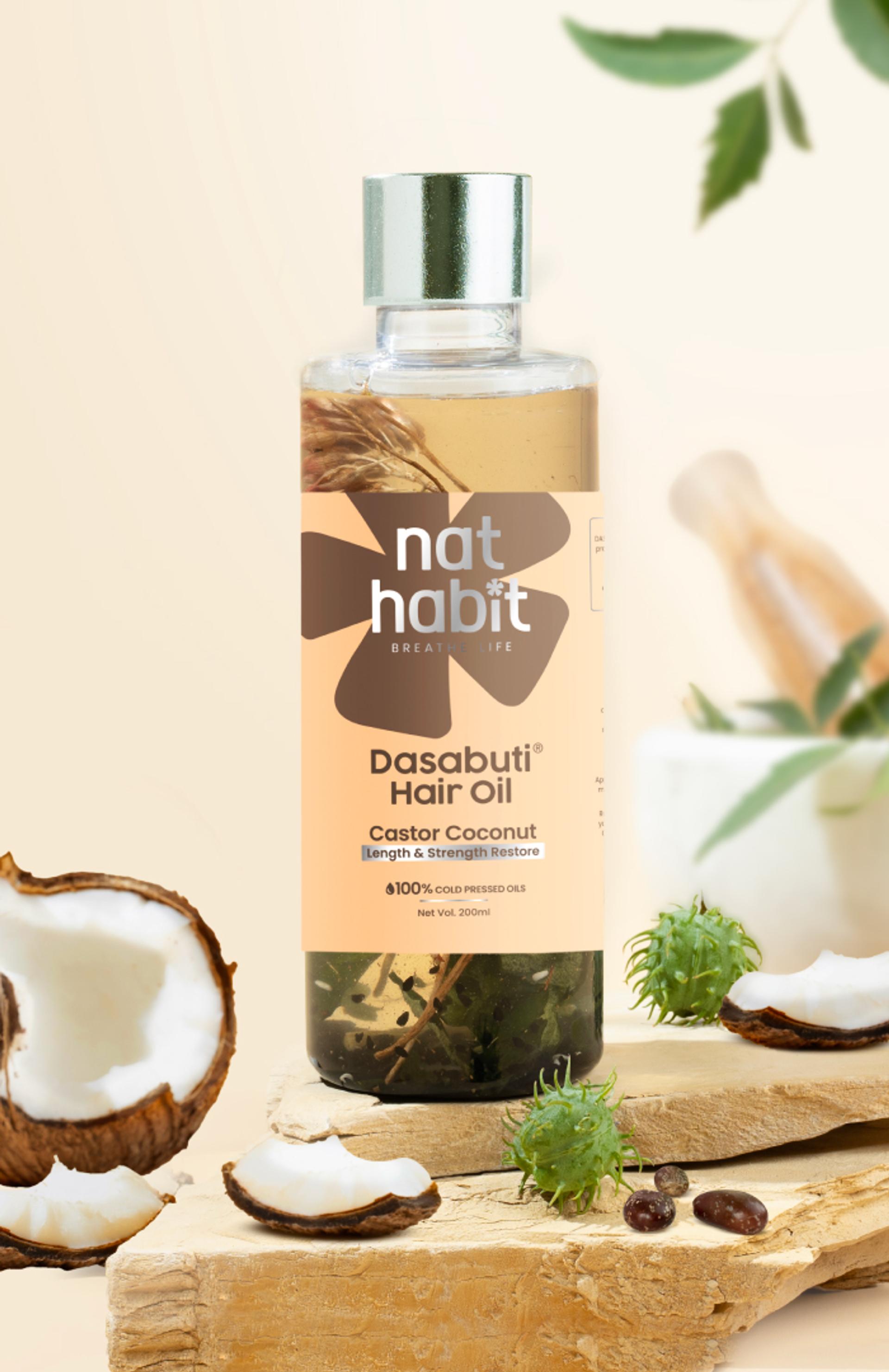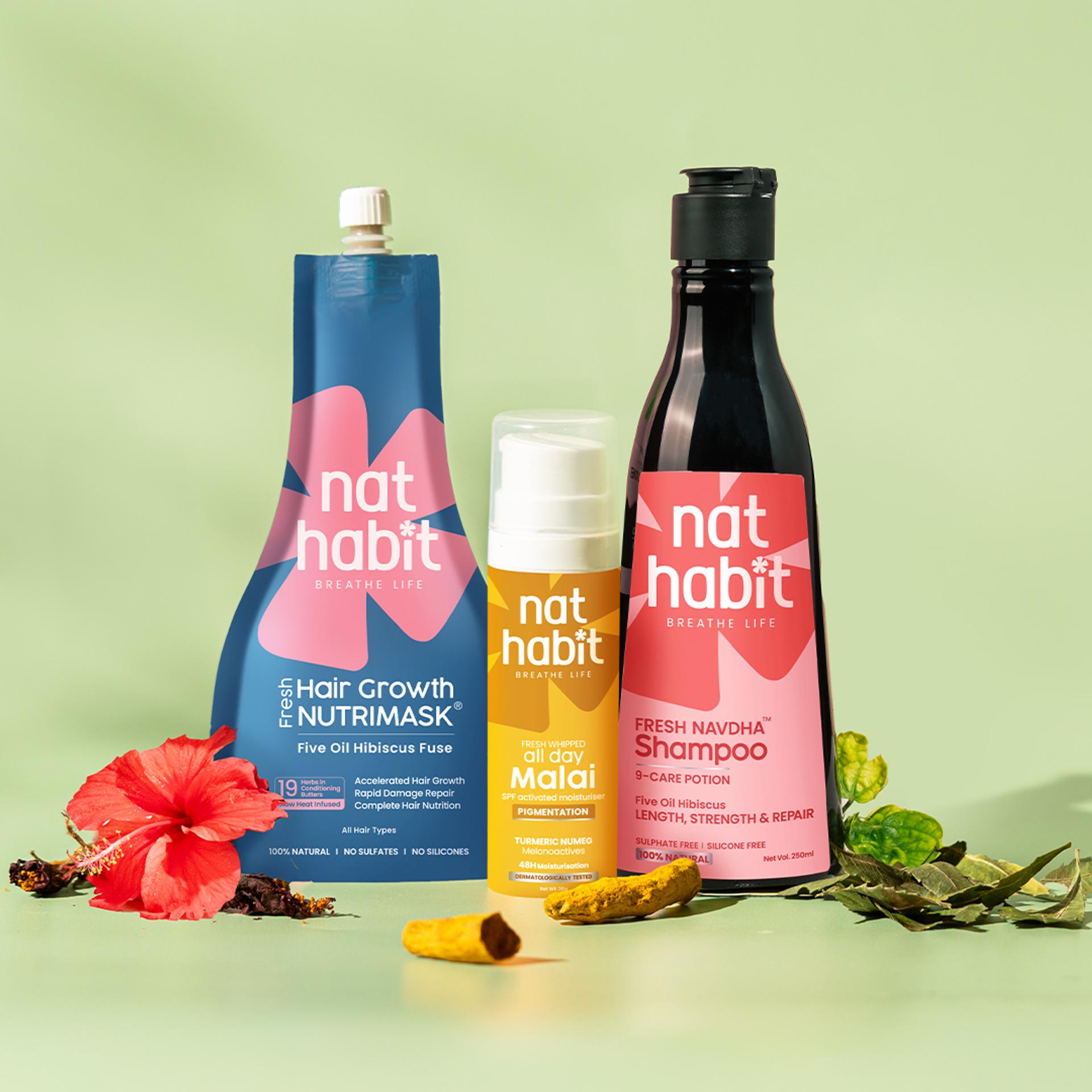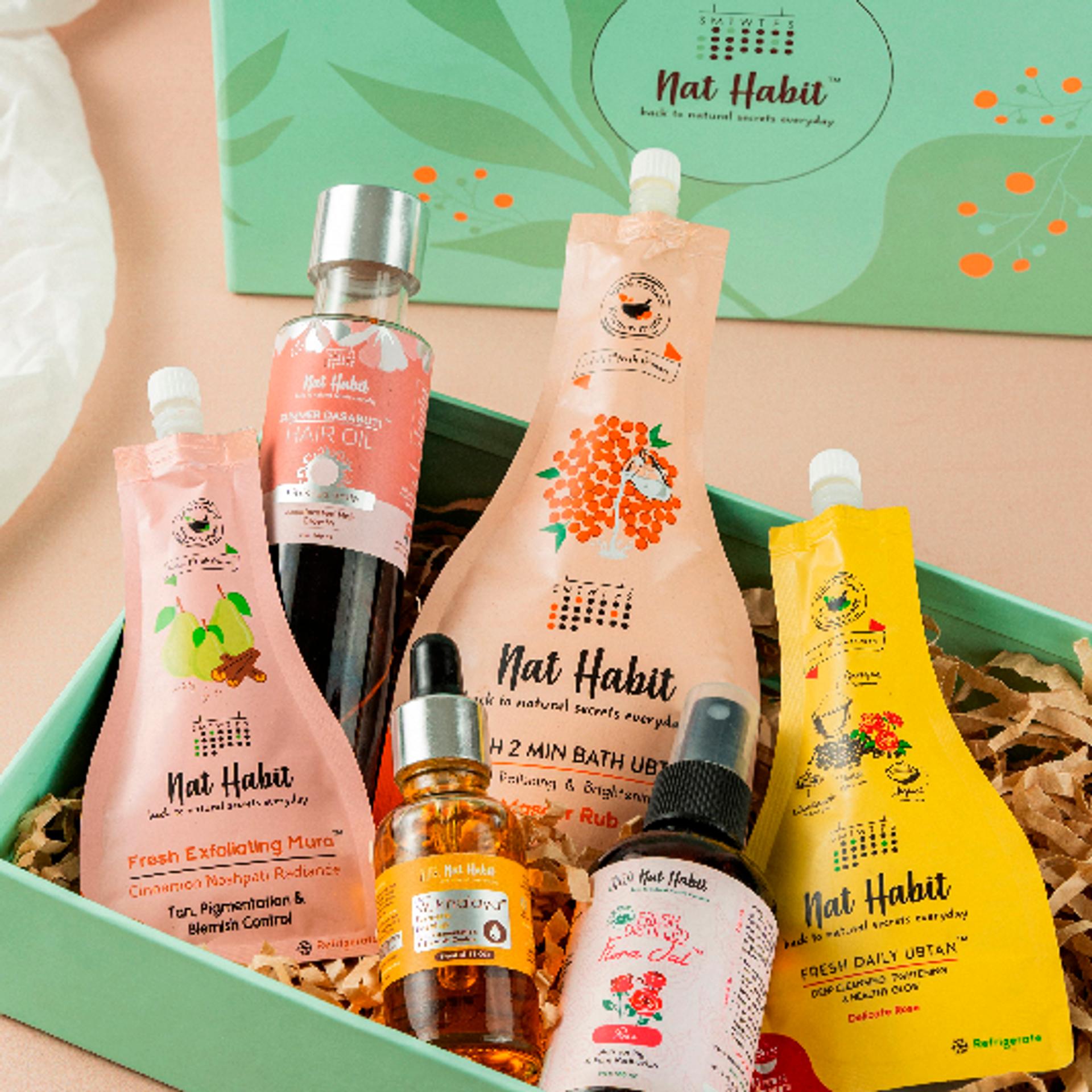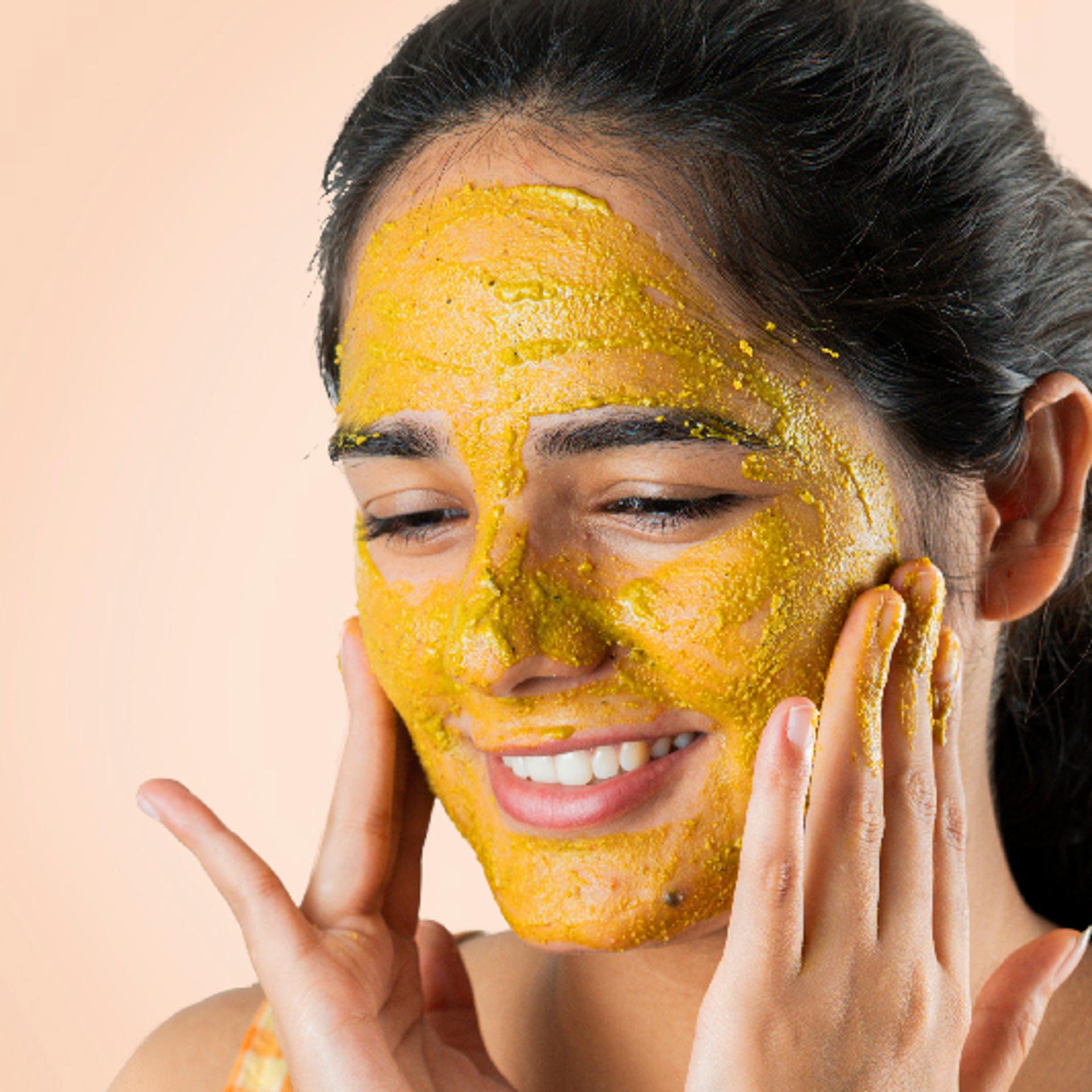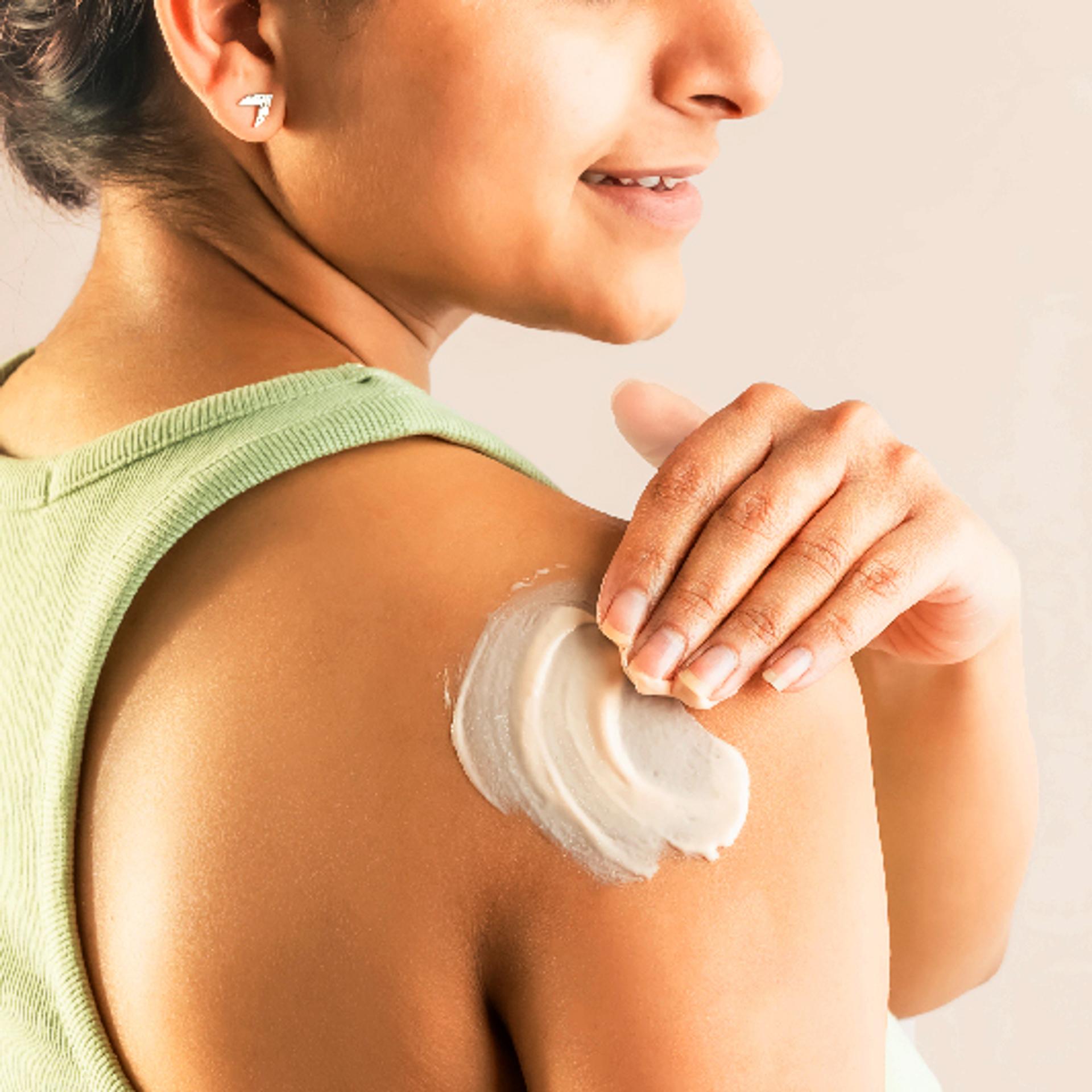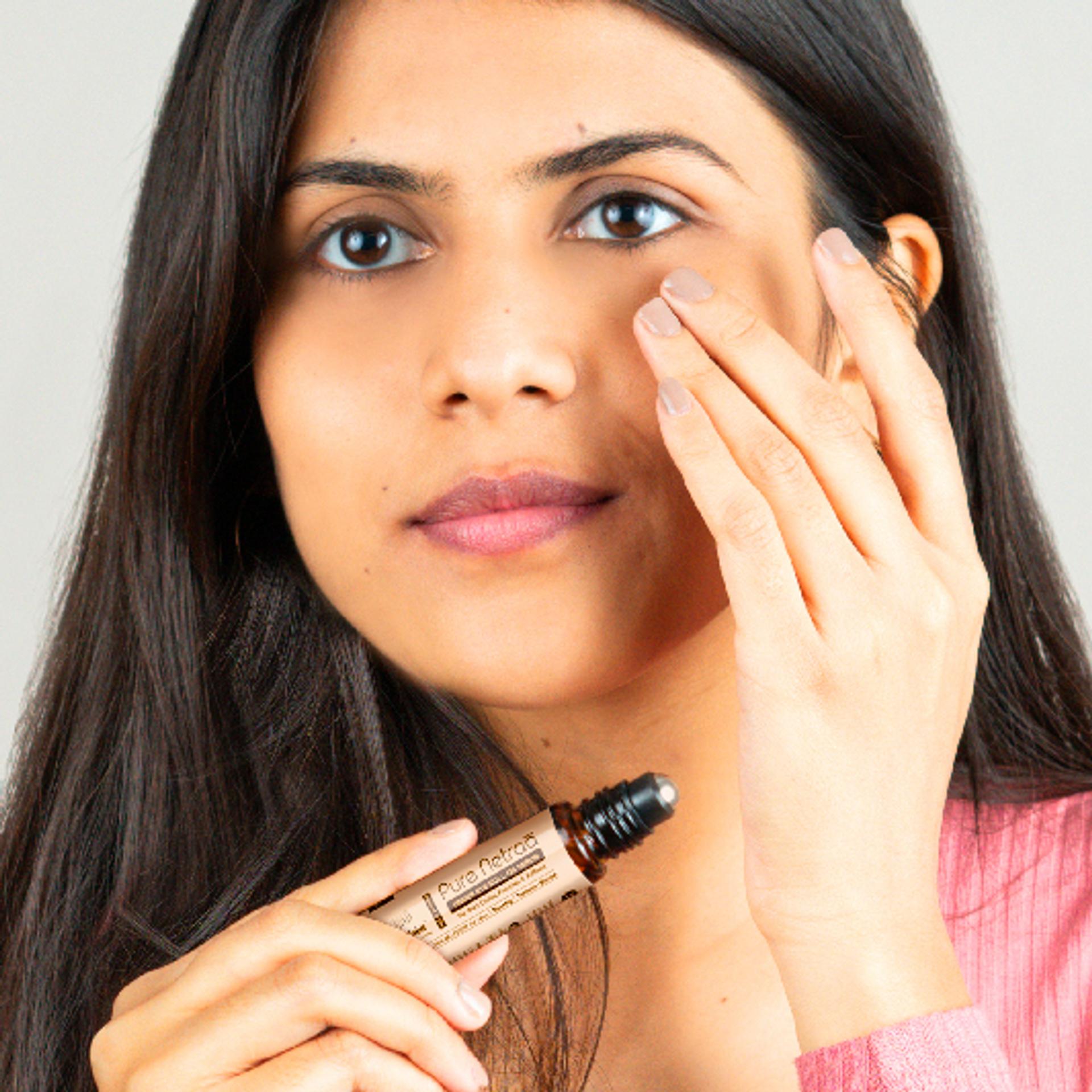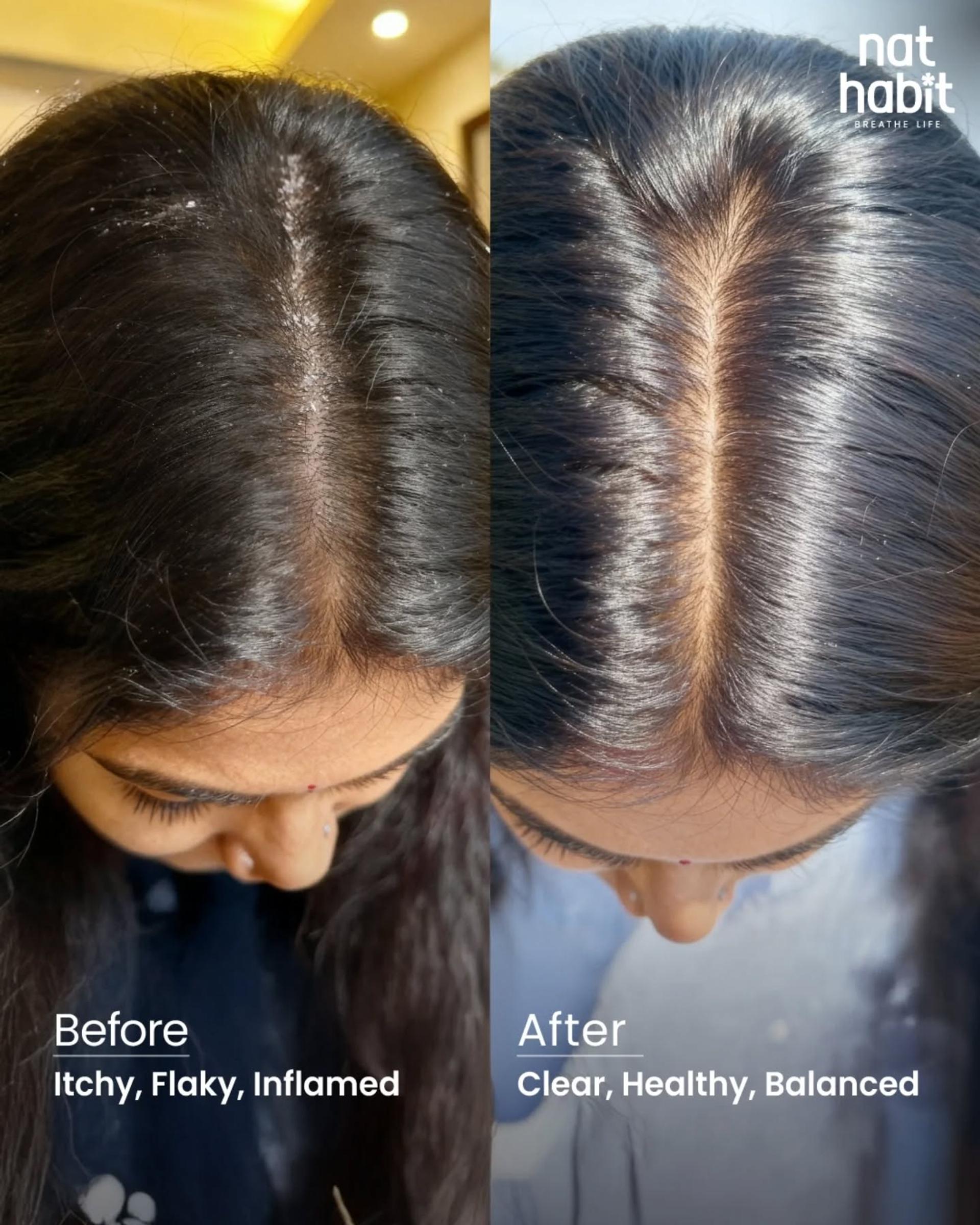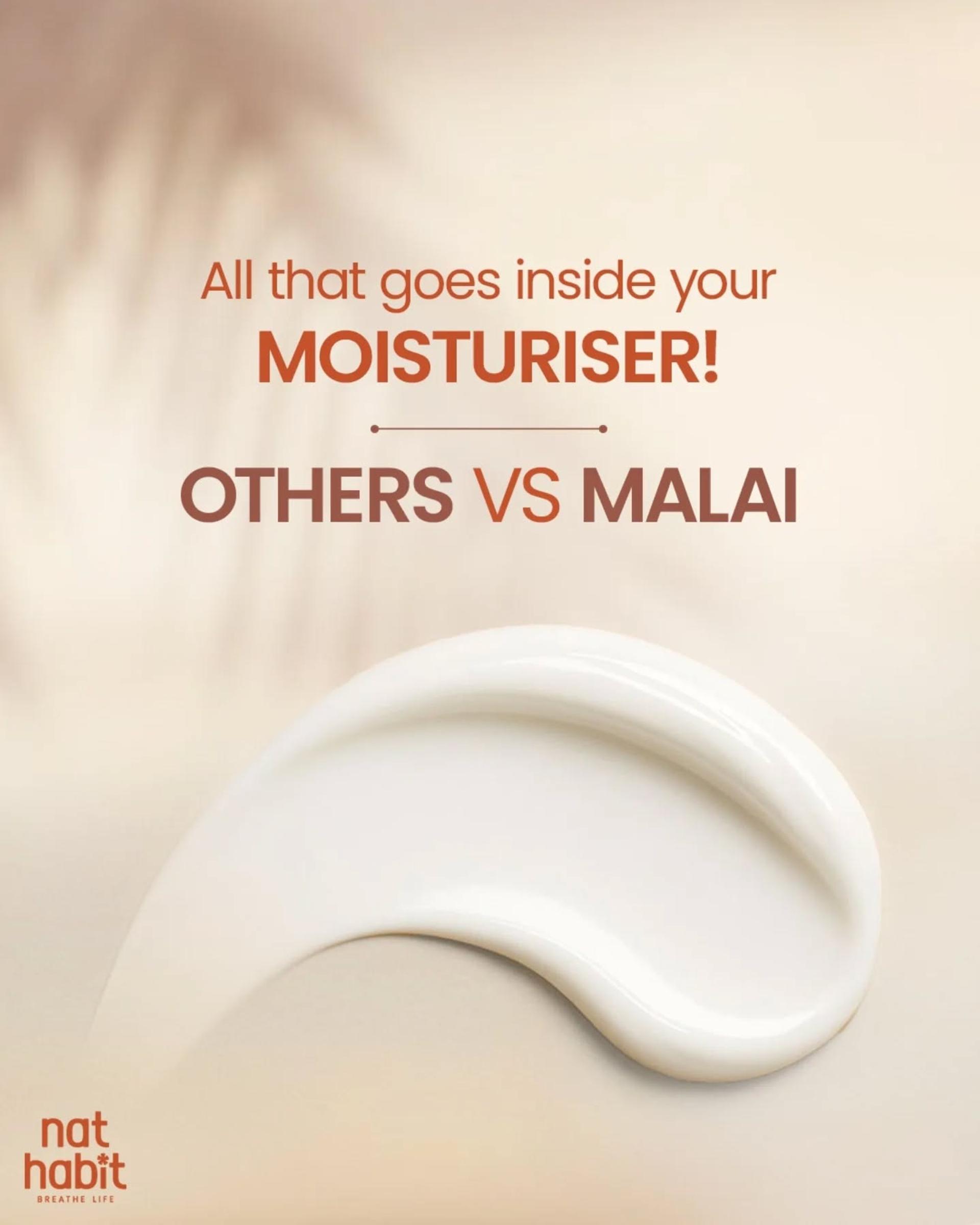Dryness control
Made Fresh Daily in our Ayurvedic Kitchen
Moisture Locking Body Care
Unreeling Some Nat Stories
Hear it from the Nat Lovers
Build Your Daily Regime for Supple Soft Skin
More Picks to Choose From
Moisturising & Strengthening Ingredients
What Causes Dry/Sensitive Skin
For dry / sensitive skin

Click To Know More
Compromised Skin Barrier – The Core of Dryness and Sensitivity
The stratum corneum, or outermost layer of the skin, is held together by lipids like ceramides, cholesterol, and fatty acids, forming a tight “brick-and-mortar” structure. In dry or sensitive skin, this lipid matrix becomes depleted, allowing trans-epidermal water loss (TEWL) and the entry of irritants. Without this protective shield, skin becomes both dehydrated and reactive—feeling tight, flaky, or burning even with mild products. Repair-focused skincare using ceramides, phytosterols, and linoleic acid-rich oils is essential to reinforce the barrier and reduce reactivity over time.
Lower Natural Moisturizing Factor (NMF) – The Inner Drought
The skin naturally produces Natural Moisturizing Factor (NMF)—a blend of amino acids, lactic acid, urea, and PCA—that draws moisture from the atmosphere and deeper layers to hydrate cells. In dry or sensitive skin, NMF levels are significantly lower due to genetics, age, or harsh cleansing. This leads to reduced water retention and internal dehydration, even if the skin looks oily. NMF-boosting ingredients like vitamin B5 and amino acids help increase internal hydration and reduce tightness, flakiness, and micro-irritation.
Hyperactive Immune Response – Why Sensitive Skin Overreacts
Sensitive skin is often characterized by an exaggerated immune response to minor stimuli—like fragrance, alcohol, or temperature shifts. The skin releases pro-inflammatory cytokines leading to redness, stinging, or even itching. This inflammation further weakens the barrier, creating a vicious cycle. Calming actives help suppress inflammatory signals, reduce histamine activity, and promote a return to homeostasis.
pH Imbalance – The Acid Mantle That Keeps Sensitivity in Check
Healthy skin maintains a slightly acidic pH (around 4.7–5.5) which inhibits pathogen growth and supports barrier function. When the pH rises—due to alkaline cleansers, hard water, or over-exfoliation—the acid mantle is disrupted, encouraging microbial imbalances and barrier thinning. Sensitive skin often reflects this pH imbalance as it becomes more prone to irritation. Skincare for this type should avoid soaps and include pH-balanced formulas, plus mildly acidic toners (like those with lactic acid or apple cider vinegar derivatives) to help rebalance and fortify the skin's ecosystem.
Reduced Sebum Production – Starving Skin of Lipid Support
Sebum, often vilified in oily skin, is actually essential for dry and sensitive skin types. It delivers protective fatty acids, squalene, and antioxidants that maintain barrier integrity. In dry skin, low sebum production means fewer protective lipids, which allows more TEWL and increases surface sensitivity to wind, detergents, and pollution. Replacing this natural oil layer with non-comedogenic, skin-identical lipids like jojoba oil or evening primrose oil restores lipid equilibrium and helps seal in moisture and calm without triggering breakouts or congestion.
Environmental Sensitizers – The Daily Assault on Compromised Skin
Dry and sensitive skin types are highly reactive to UV exposure, pollution, temperature extremes, and blue light, all of which damage skin proteins, lipids, and DNA. These triggers increase oxidative stress and barrier inflammation, making skin even more fragile. Antioxidants like vitamin E and green tea polyphenols combined with physical sunscreen filters (like zinc oxide) offer both protection and inflammation control. For sensitive skin, shielding is as important as repairing—preventing exposure is key to calming sensitivity at its root.
Elixir Drops of Nutrition
Made Fresh Daily in our Ayurvedic Kitchen
Care Beyond Products
Quick Tips!
✓
Include healthy fats like flaxseeds, ghee, and nuts in your diet.
✓
Practice daily abhyanga (self-oil massage) before bath to nourish skin.
✓
Avoid over-exfoliating—it can damage the skin barrier.
✓
Oil your belly button—it can help lubricate the body's dryness.
✓
Don’t skip meals—nutrient gaps can show up as dry skin.
Read & Know More!
Same Soul, Fresh Look
With Fresh Ayurveda
Latest from our Ayurvedic Kitchen
Explore our other Categories
We hope you'll like them
